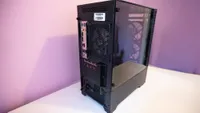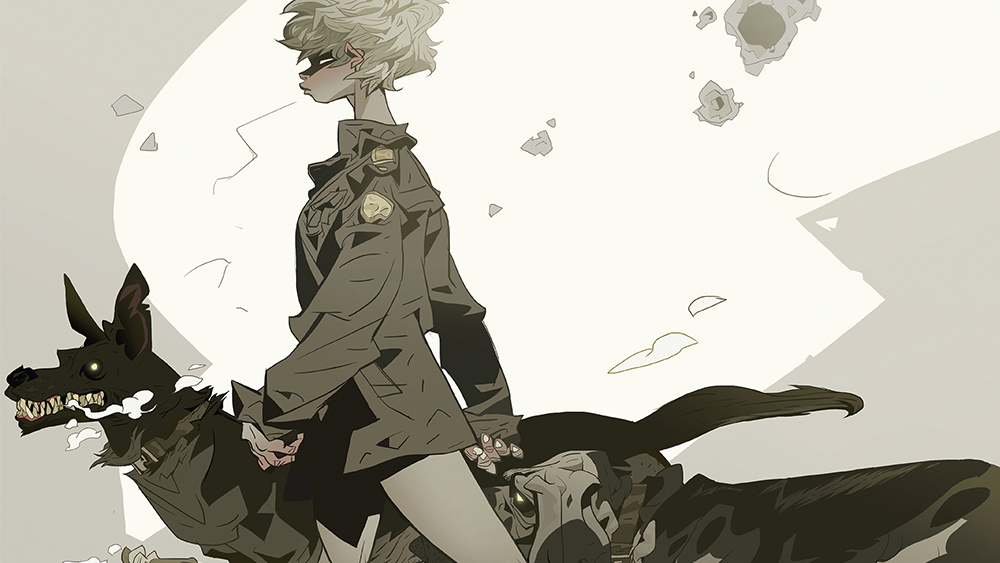The best computer for graphic design: fast performers with beautiful displays
Speed up your workflow with the best computer for graphic design, guaranteed to handle extensive creative tasks.
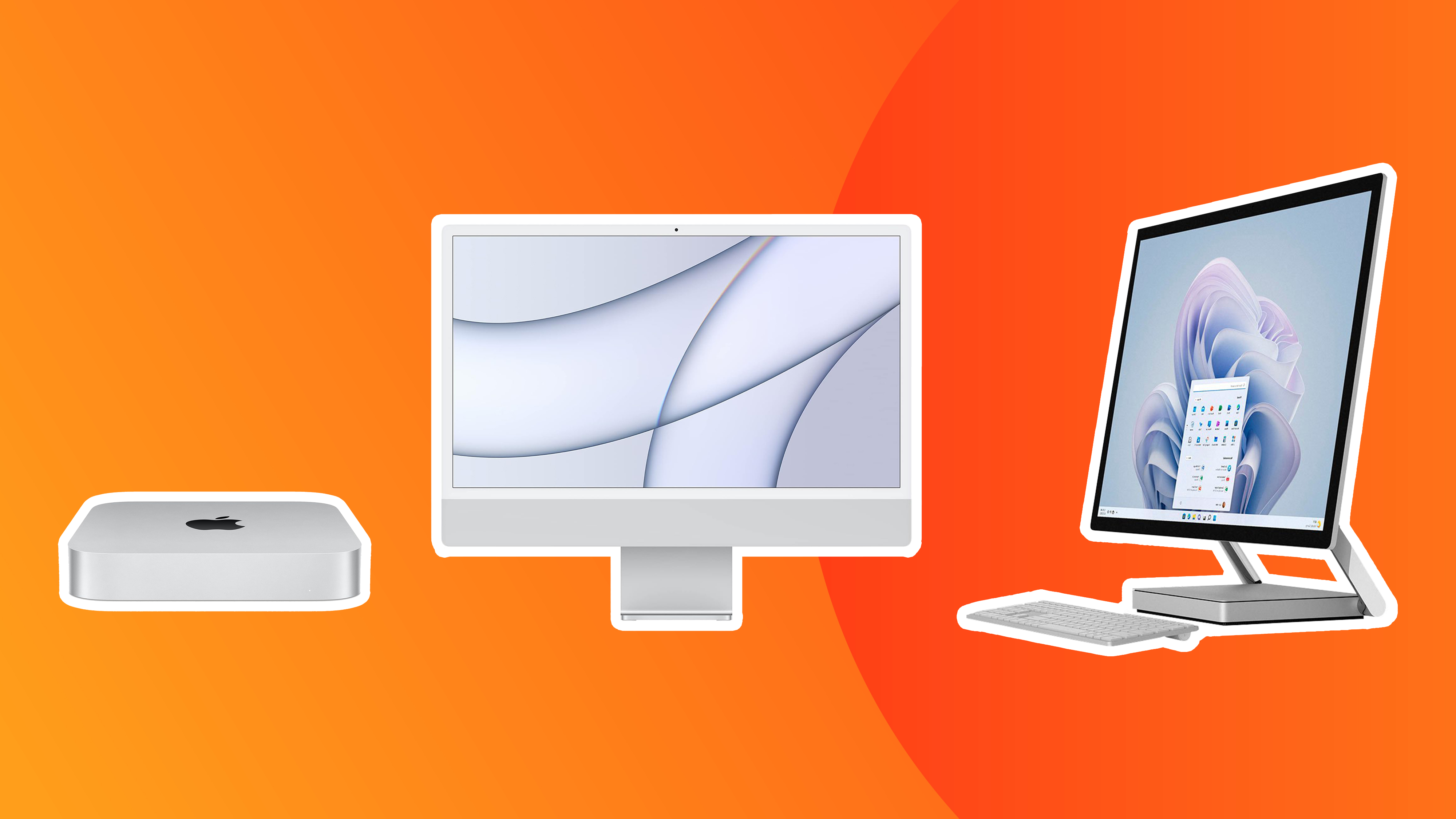
The best computer for graphic design needs to handle demanding creative software without breaking a sweat. Programs like Adobe Photoshop, Illustrator, and InDesign require serious processing power, while tasks like 3D rendering and video editing push systems even harder. You'll also want plenty of RAM for smooth multitasking, fast storage for large project files, and quality connectivity for peripherals and external displays.
At Creative Bloq, we've tested dozens of desktop computers to find the best options for designers at every budget level. Our top pick is the Mac mini (M4, 2024), which offers exceptional performance in a compact package, but we've also included powerful Windows alternatives, budget-friendly options, and specialist machines for those with demanding workflows.
If you need to buy a monitor too, see our guide to the best monitors for graphic artists will prove useful. If you prefer an all-in-one, see our roundup of the best laptops for graphic design, and you might also find our list of the best video editing computers useful.

Beren has worked on creative tech publications at Future Publishing for over 13 years. As Ecom Editor, he divides his time between testing the latest kit and hunting down the best deals for digital creatives. A fan of Windows and Apple PCs, he's been using and reviewing computers for over a decade.
Quick list
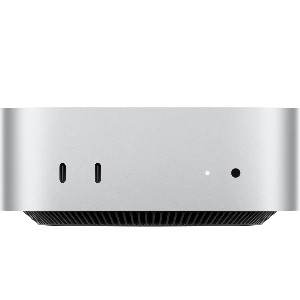
Here's our top pick. Apple has achieved something remarkable here, shrinking the mini's already compact design to just 127 x 127 x 50mm whilst improving performance across the board.
Read more below
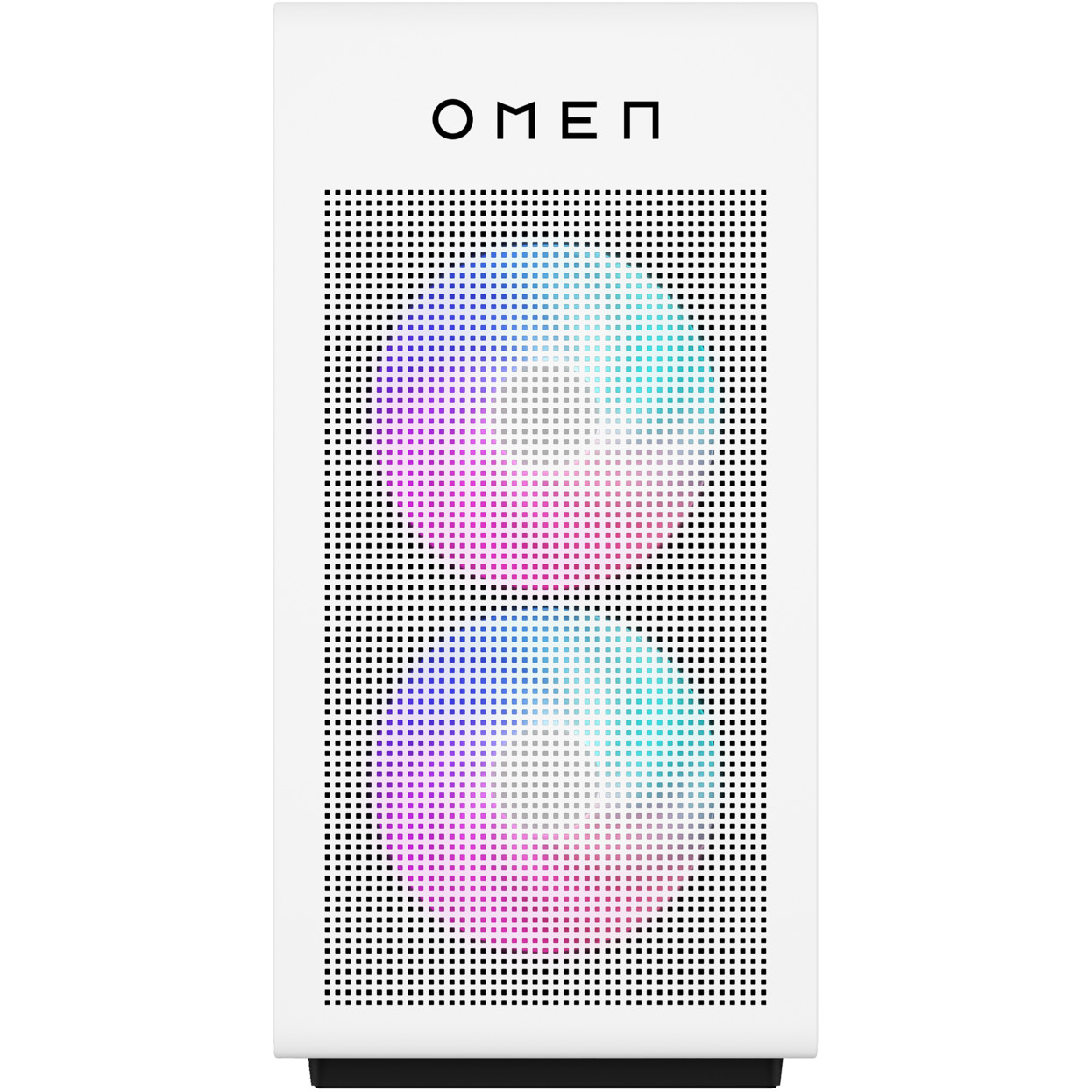
While it's marketed as a gaming PC, the HP Omen 35L boasts high-end components and generous specifications capable of handling every kind of resource-intensive creative task.
Read more below
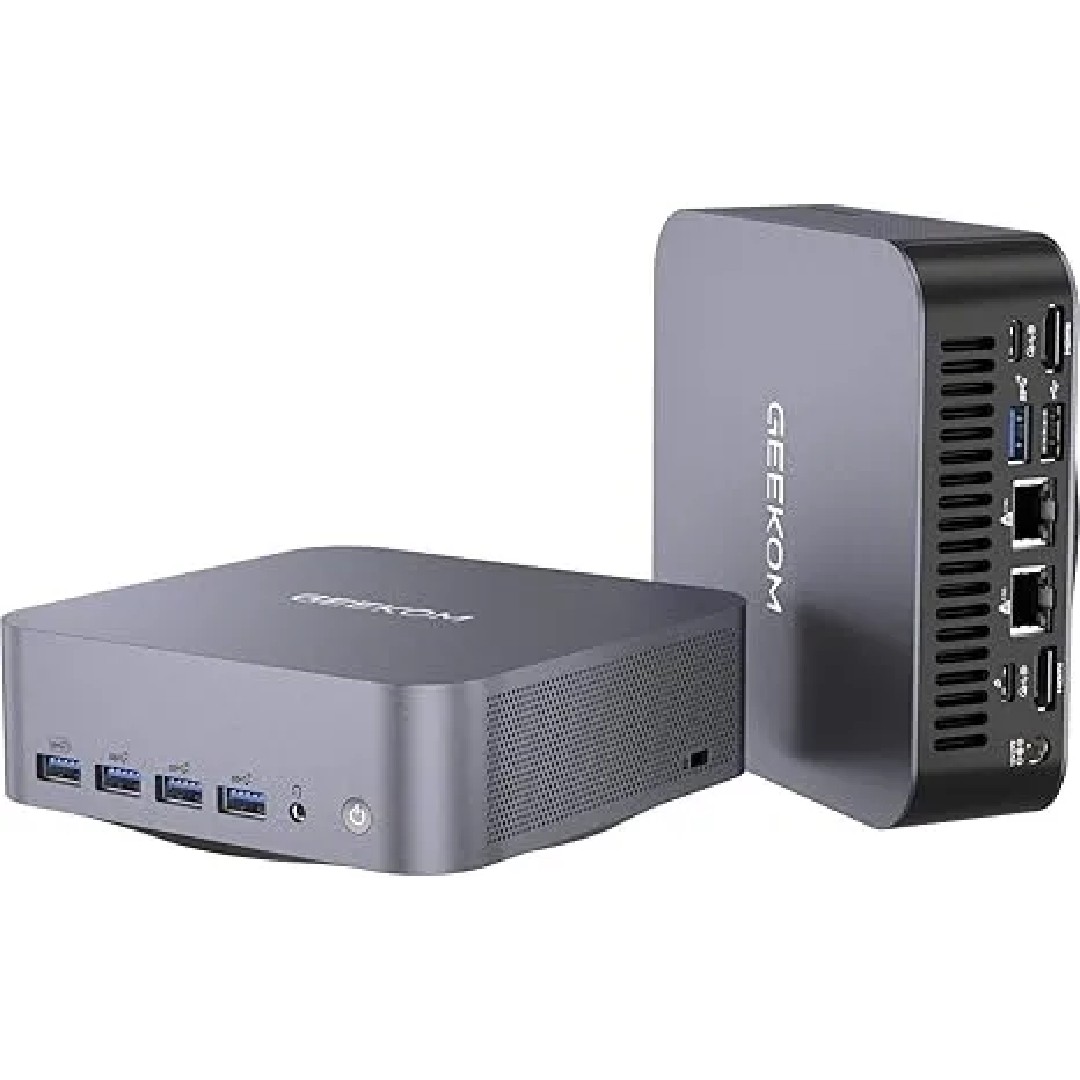
With 32GB RAM, 2TB storage and Intel's Core Ultra 9 processor, this mini PC is perfect for photo editors and designers who need desktop power in a portable package.
Read more below
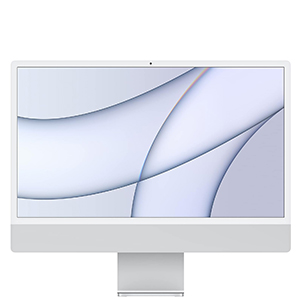
Want an all-in-one? We recommend Apple's 2024 iMac: a refined iteration of their all-in-one formula, now more accessible with a lower starting price and increased base RAM.
Read more below
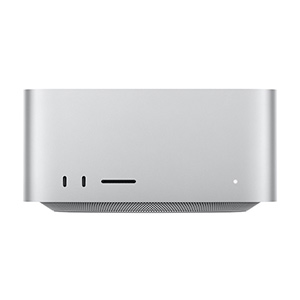
With its M2 Max or Ultra chip, the Mac Studio is more than most people need for graphic design alone, but those with complex workflows will appreciate the speed and the ability to run up to eight displays.
Read more below
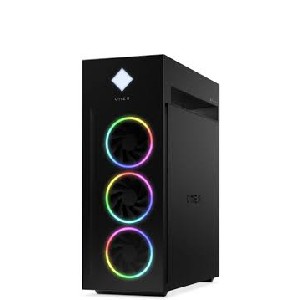
Gaming computers also tend to be excellent graphic design computers. And here's a great example. The HP Omen 45L is a high-end gaming PC that doubles as a powerful workstation.
Read more below
The best computer for graphic design
Why you can trust Creative Bloq
Best computer for graphic design overall
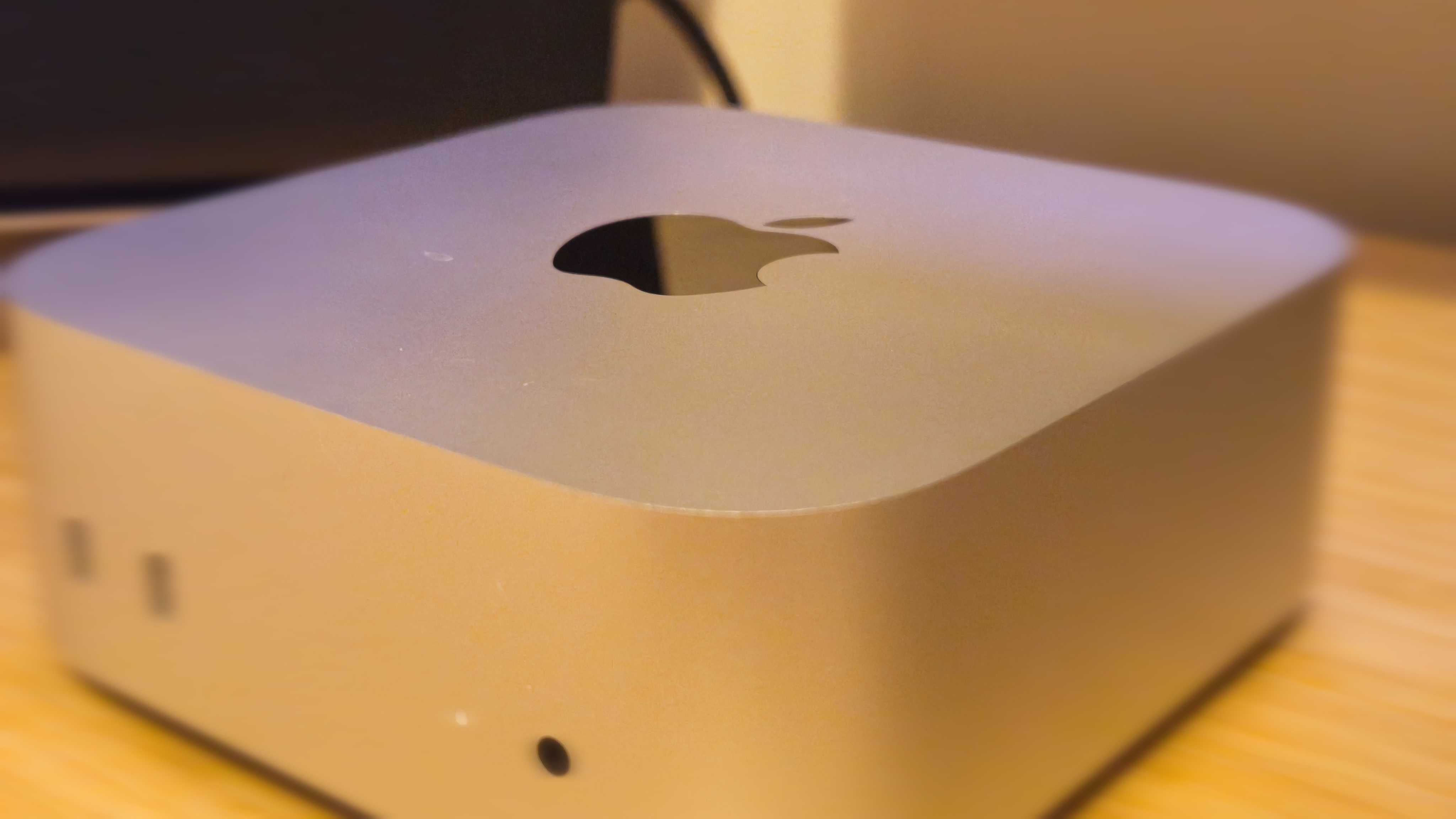
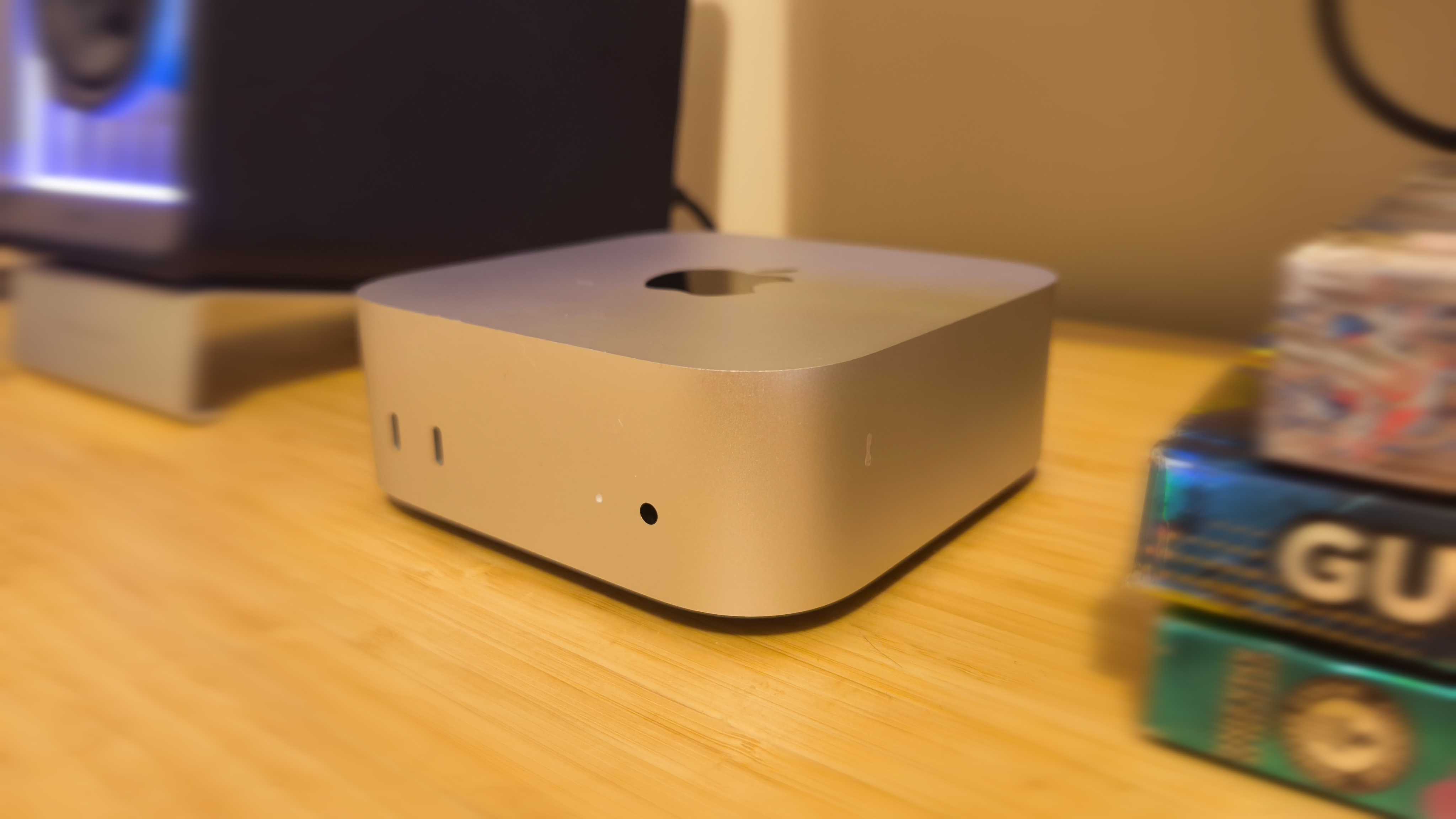
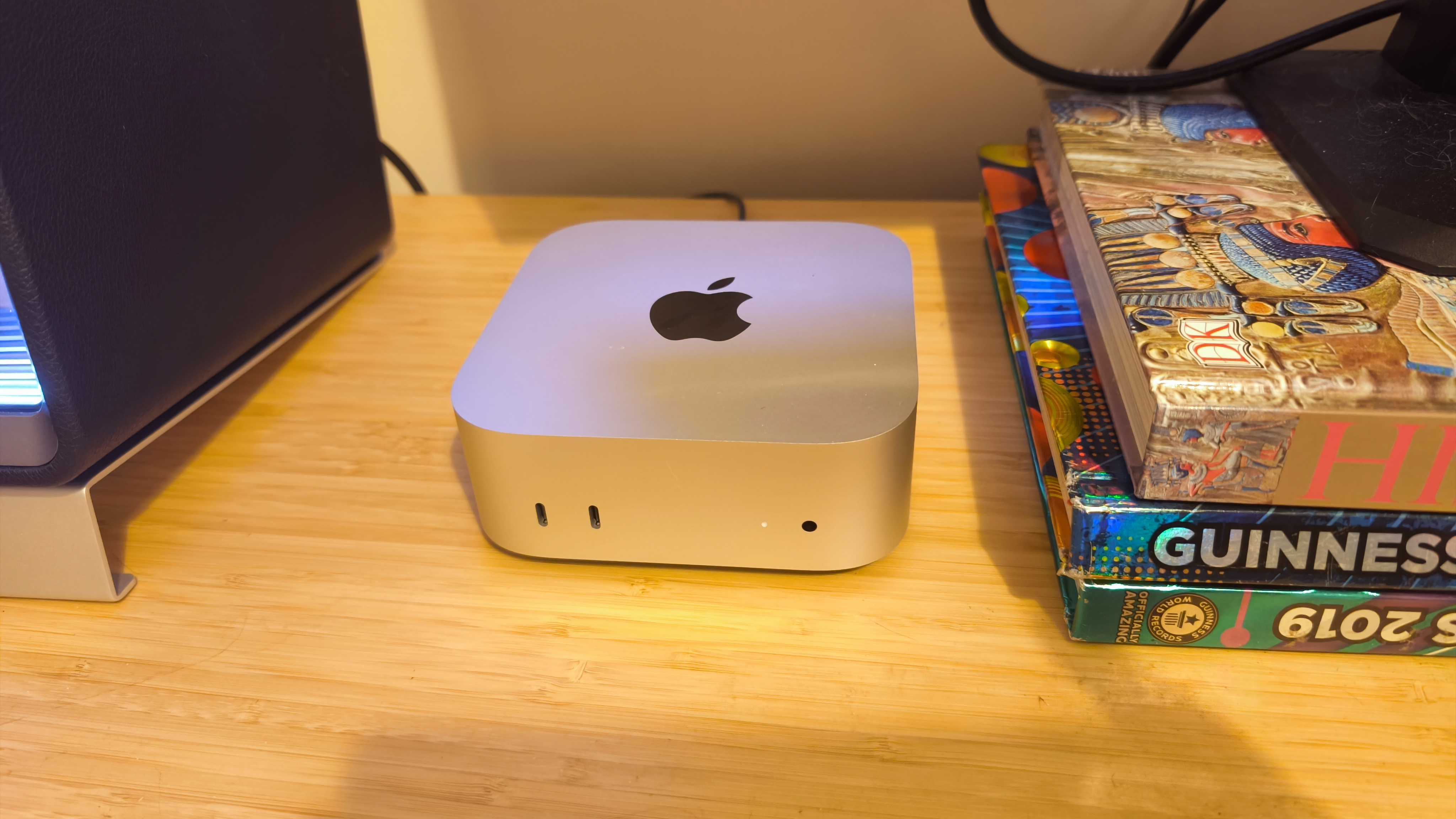

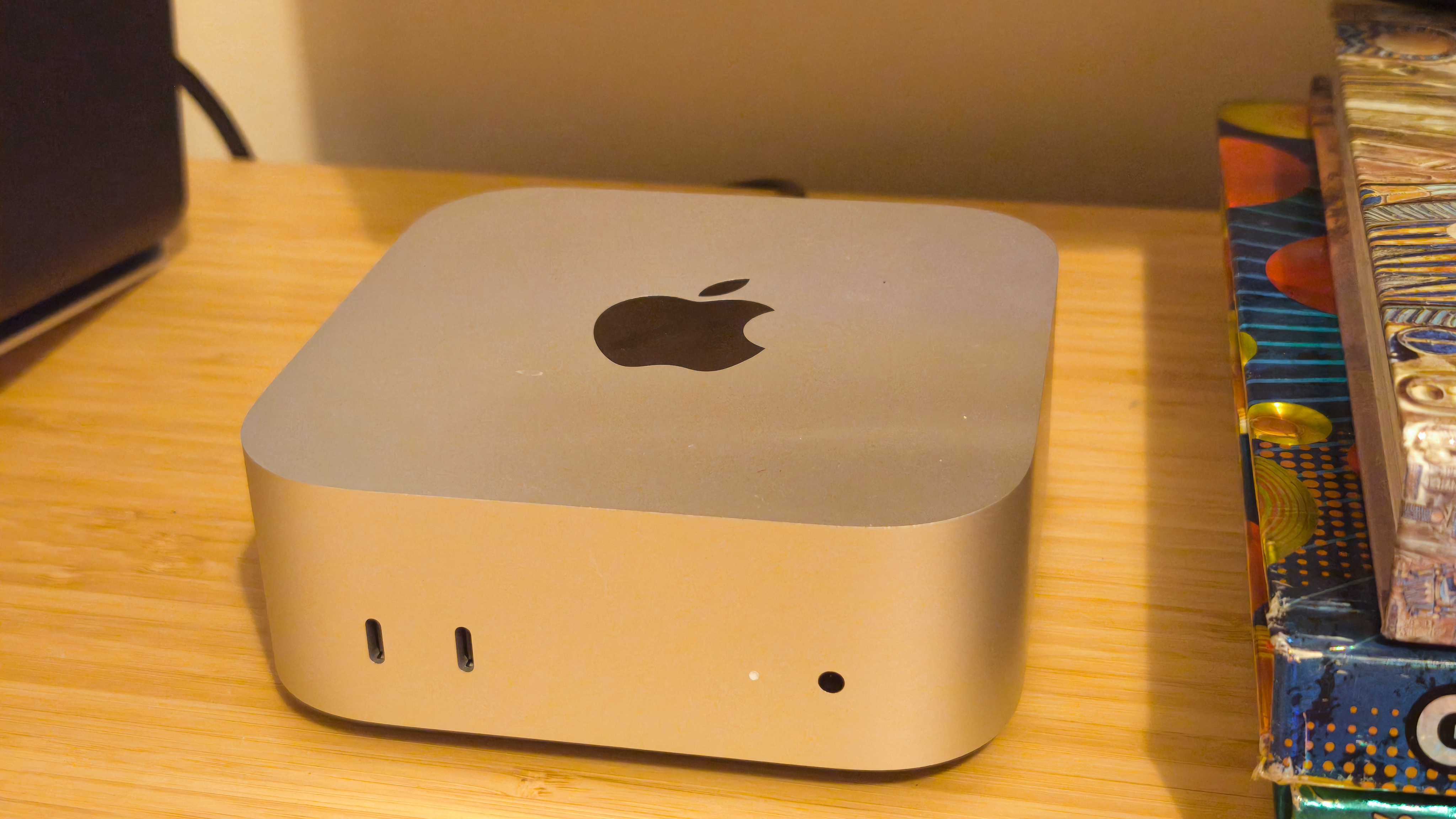
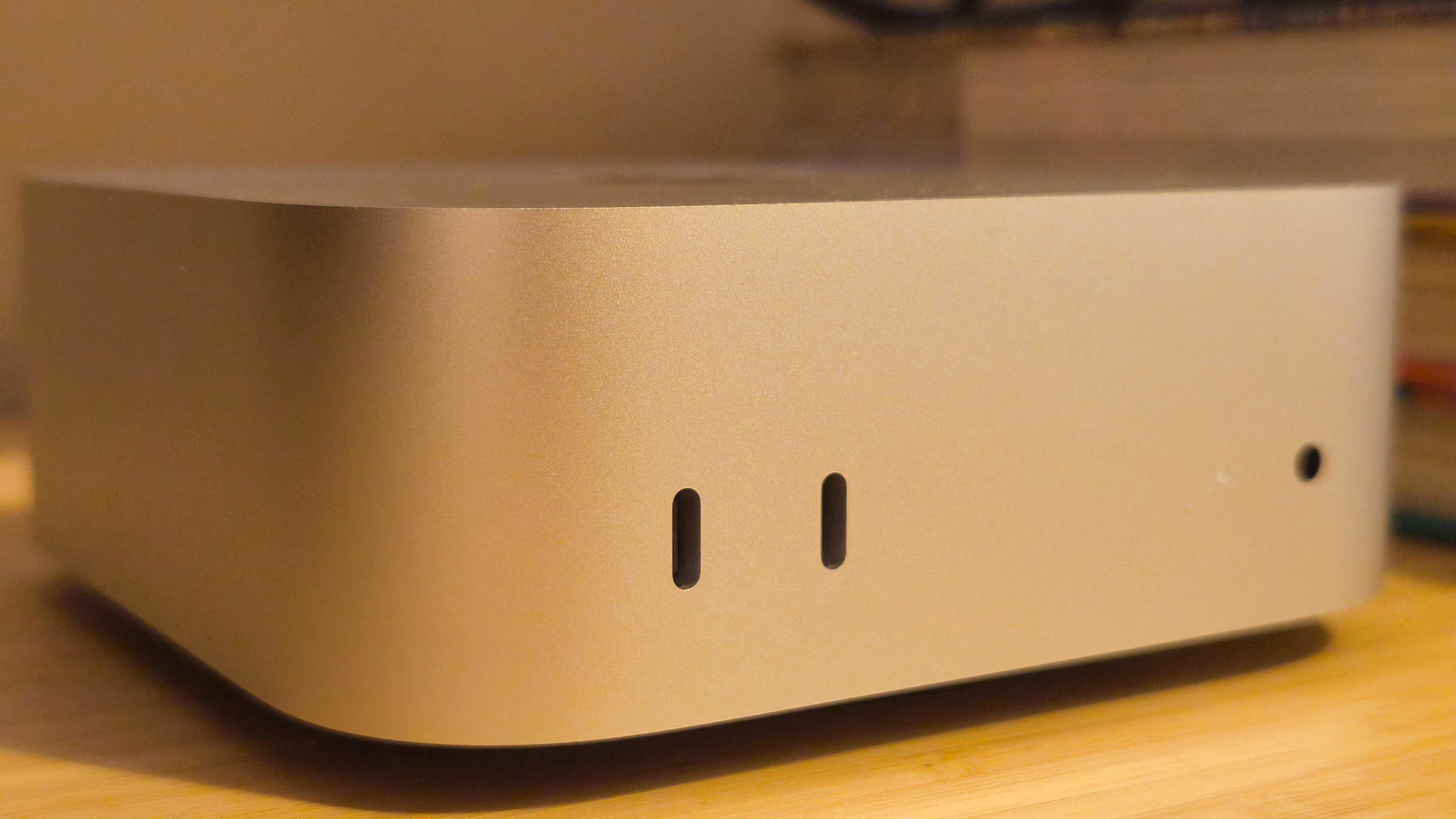
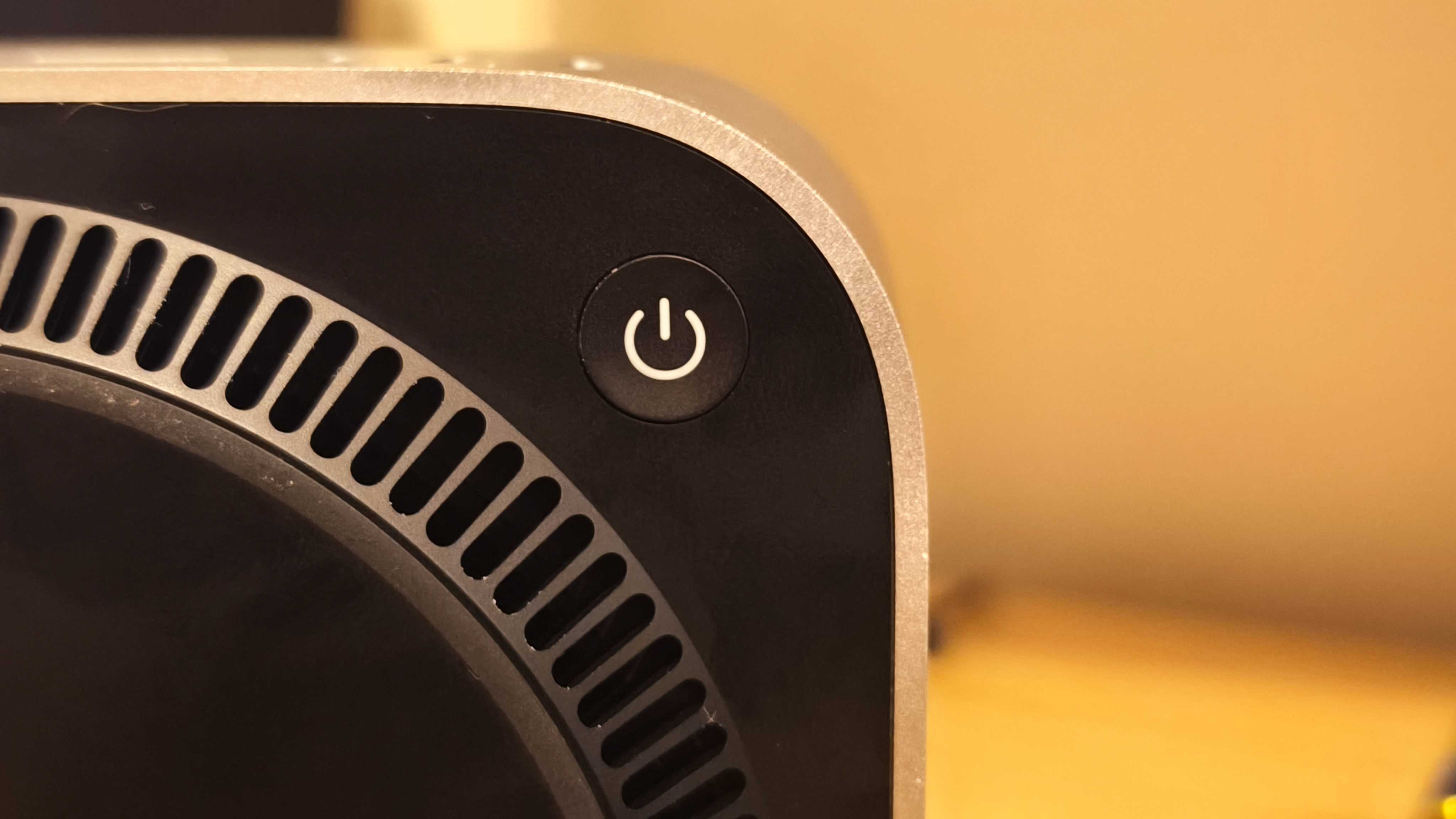
Specifications
Reasons to buy
Reasons to avoid
✅ You want pro-level power for less: You get desktop-class M4 performance at a fraction of MacBook prices.
✅ You need a space-saving workstation: The new ultra-compact design (127 x 127 x 50mm) fits anywhere.
❌ You need a complete setup immediately: You'll need to factor in the cost of a display, keyboard, and mouse.
❌ You require portable working: Despite its tiny size, this is a desktop solution only.
🔎 Mac mini (M4, 2024) delivers exceptional value for graphic designers, combining powerful performance with a brilliantly compact design. ★★★★½
What you need to know: Apple has achieved something remarkable with the Mac mini (M4, 2024), shrinking its already compact design whilst improving performance across the board. The base model now comes with 16GB unified memory as standard (double that of its predecessor), making it perfectly suited to running multiple creative applications simultaneously. We've long felt that the Mac mini line represents the best value for money across Apple's entire range, and having now reviewed the M4 mini, we still feel that way. It's an exceptional machine
Design: This is Apple's smallest computer ever. The new 127 x 127 x 50mm footprint represents a significant reduction from previous models, while adding convenient front USB-C ports. It's a more portable choice than the iMac M4 featured below, though of course, you do need to factor in a monitor. Connection options are comprehensive, with Thunderbolt 4 ports (or Thunderbolt 5 on the Pro model) and HDMI supporting up to 8K at 60Hz or 4K at 240Hz, perfect for high-resolution design work. It's basically the exact same deal design-wise as previous Mac minis, which you could call a boring lack of innovation, but you could also call a triumphant case of not fixing what manifestly ain't broke.
Performance: In our benchmark tests, the Mac mini M4 outperformed even the beefy Mac Studio 2. With the neural engine capable of 38 trillion operations per second, we found that all our design apps ran beautifully (and when they didn't, it wasn't the computer's fault). The base model's 16GB unified memory means it will handle demanding creative workflows with ease, and stay virtually silent even under heavy loads, making it ideal for studio environments. The M4 Pro version offers additional graphics power for the most demanding tasks.
Value: Starting at £599 for the M4 model (£1,399 for M4 Pro), the Mac mini represents exceptional value in the professional desktop space. While you'll need to budget for peripherals, the performance-to-price ratio is outstanding.
Attributes | Notes | Rating |
|---|---|---|
Price | Outstanding value | ★★★★★ |
Design | Incredibly compact | ★★★★½ |
Performance | Excellent for creative workflows | ★★★★★ |
Connectivity | Comprehensive | ★★★★ |

"It's tiny, but the Mac mini packs enough power for any creative design task, and unlike many Apple products, it offers great value for your money."
Best Windows computer for graphic design
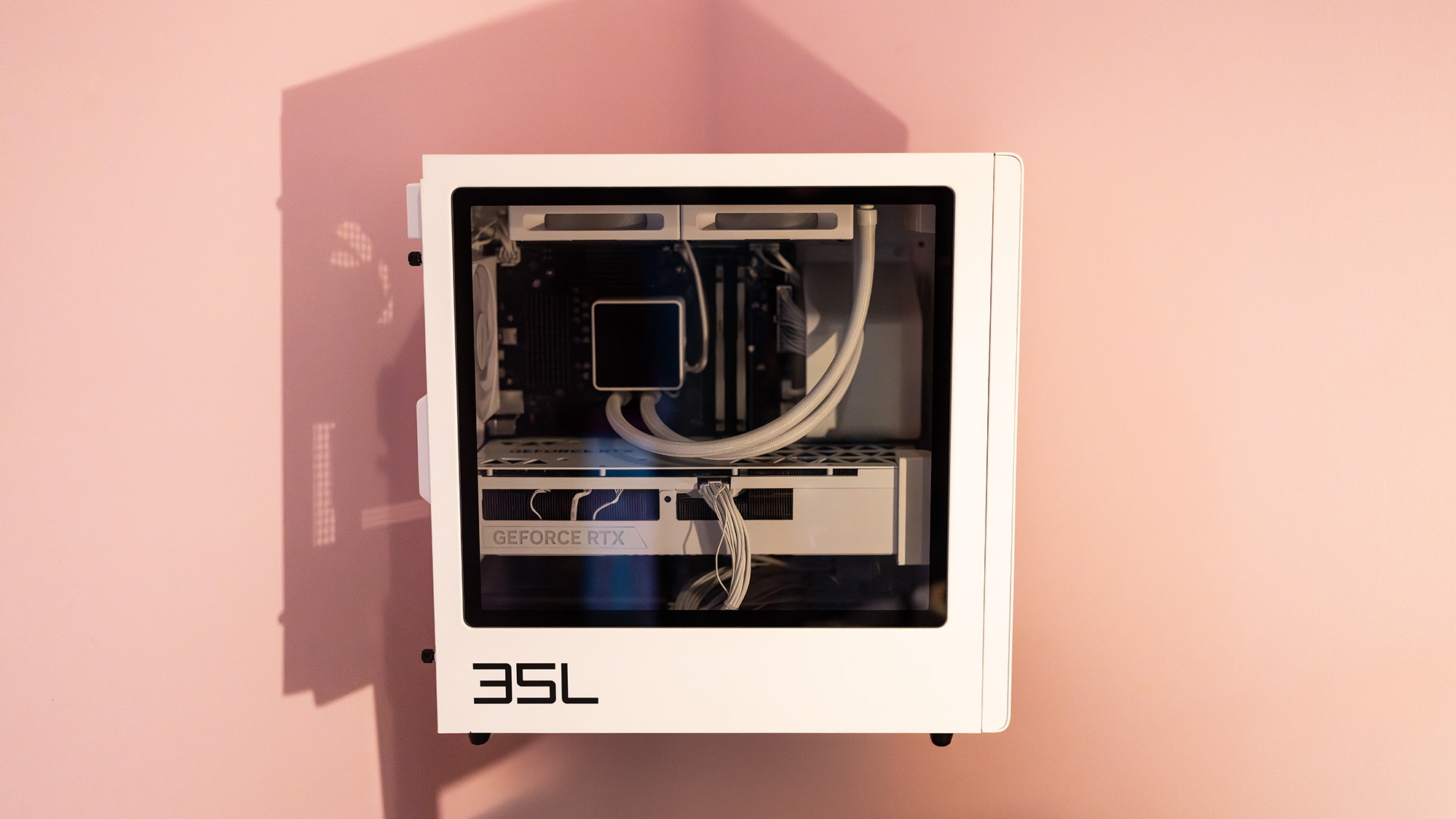
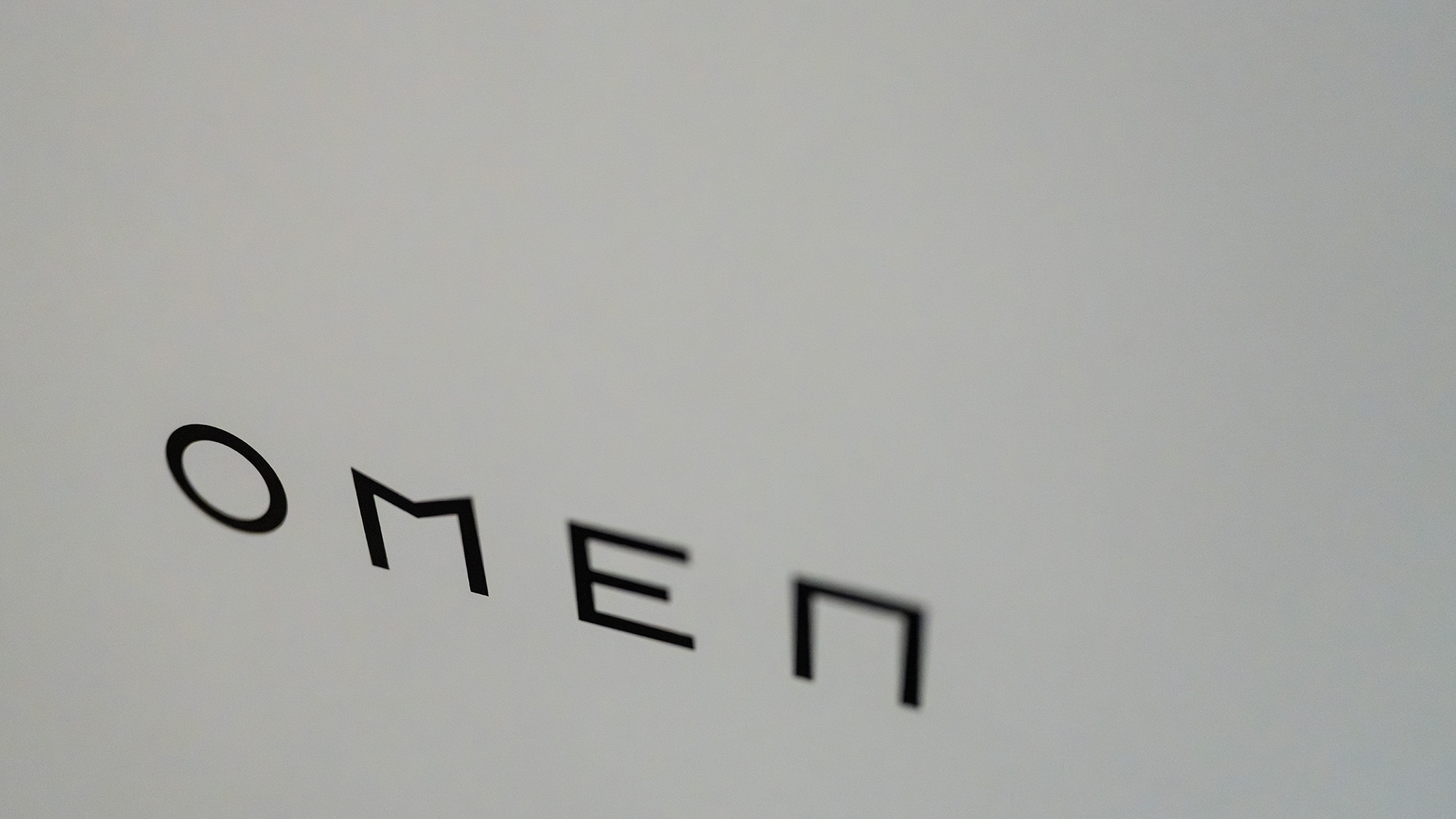
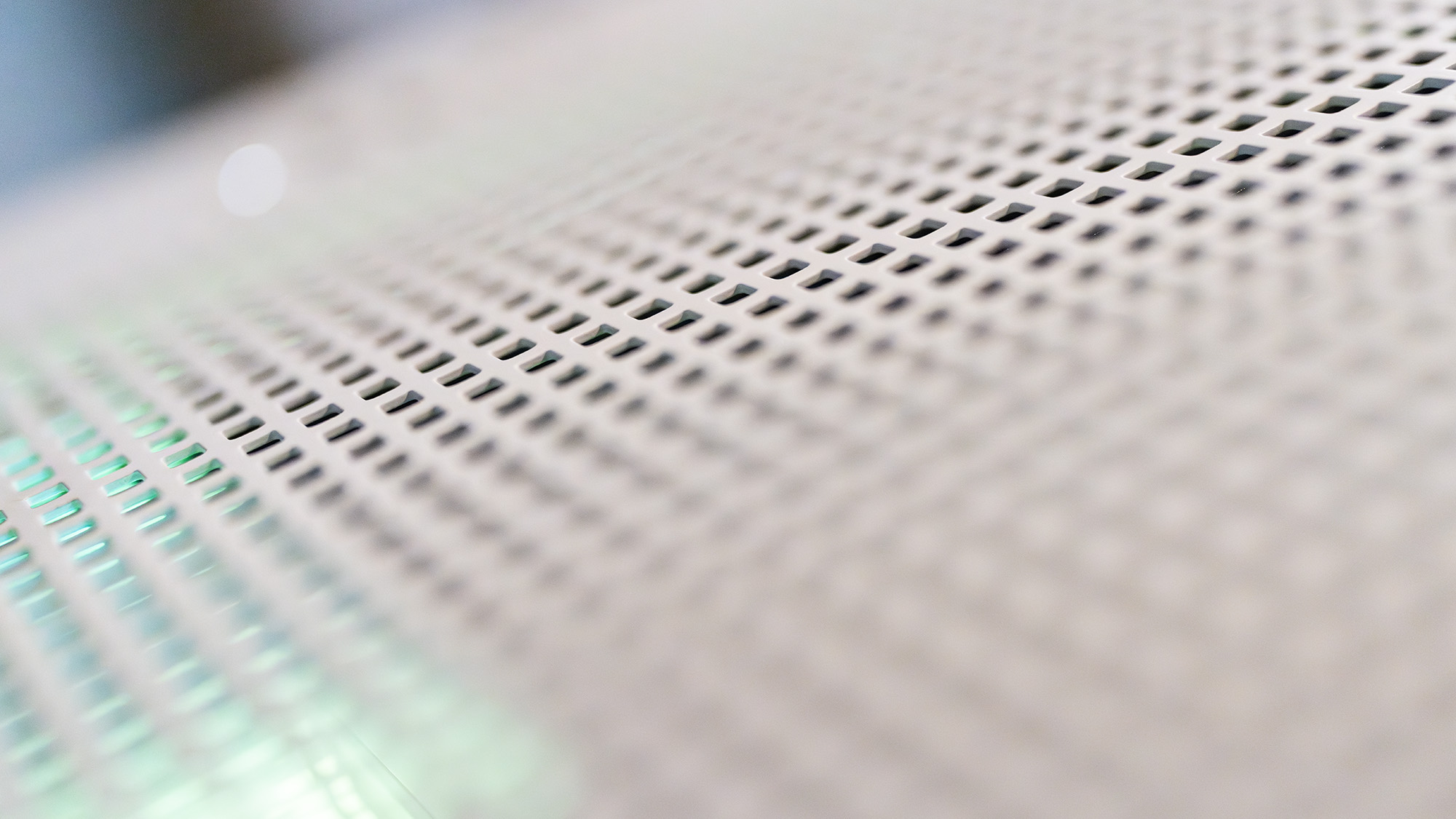
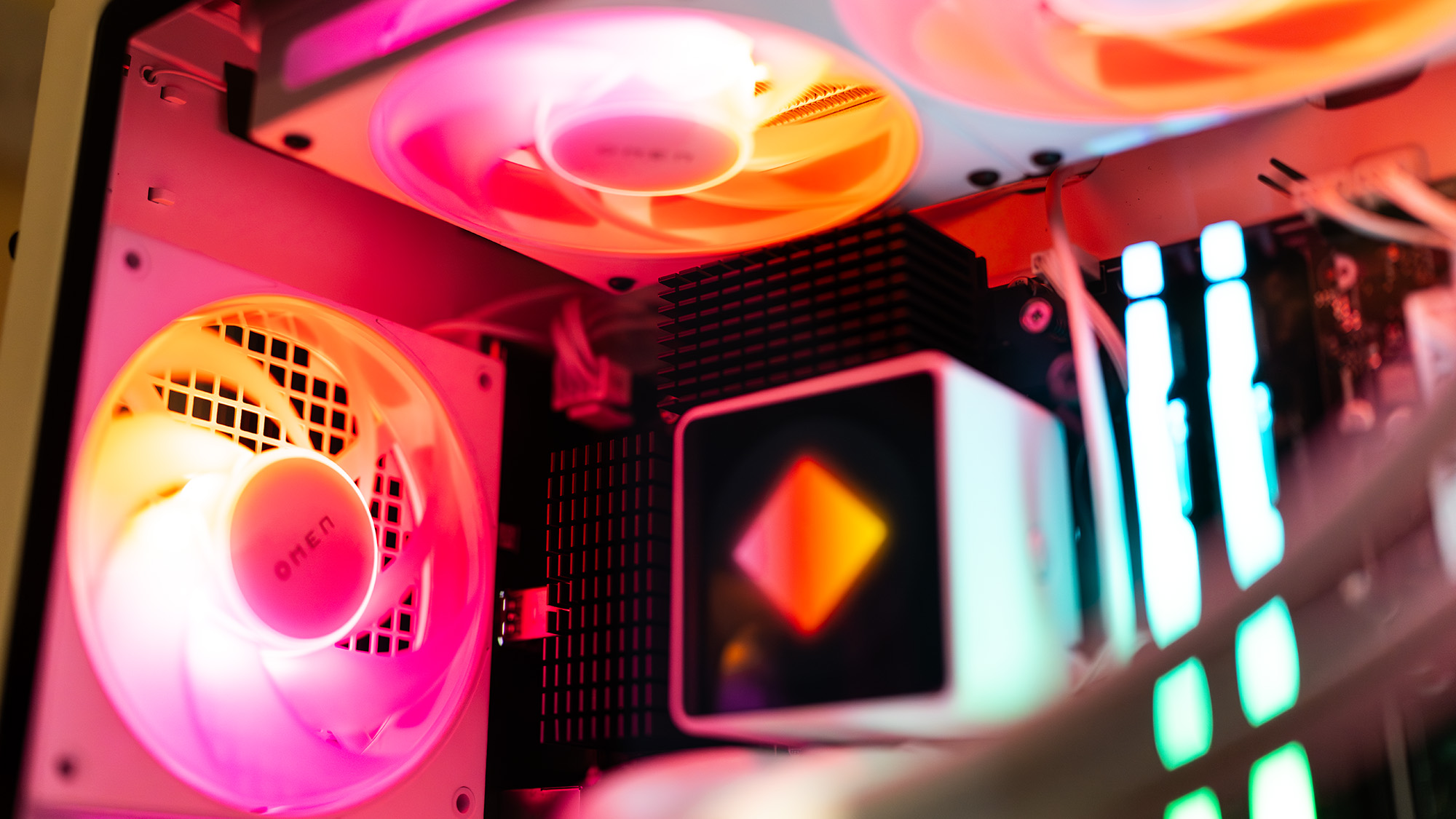

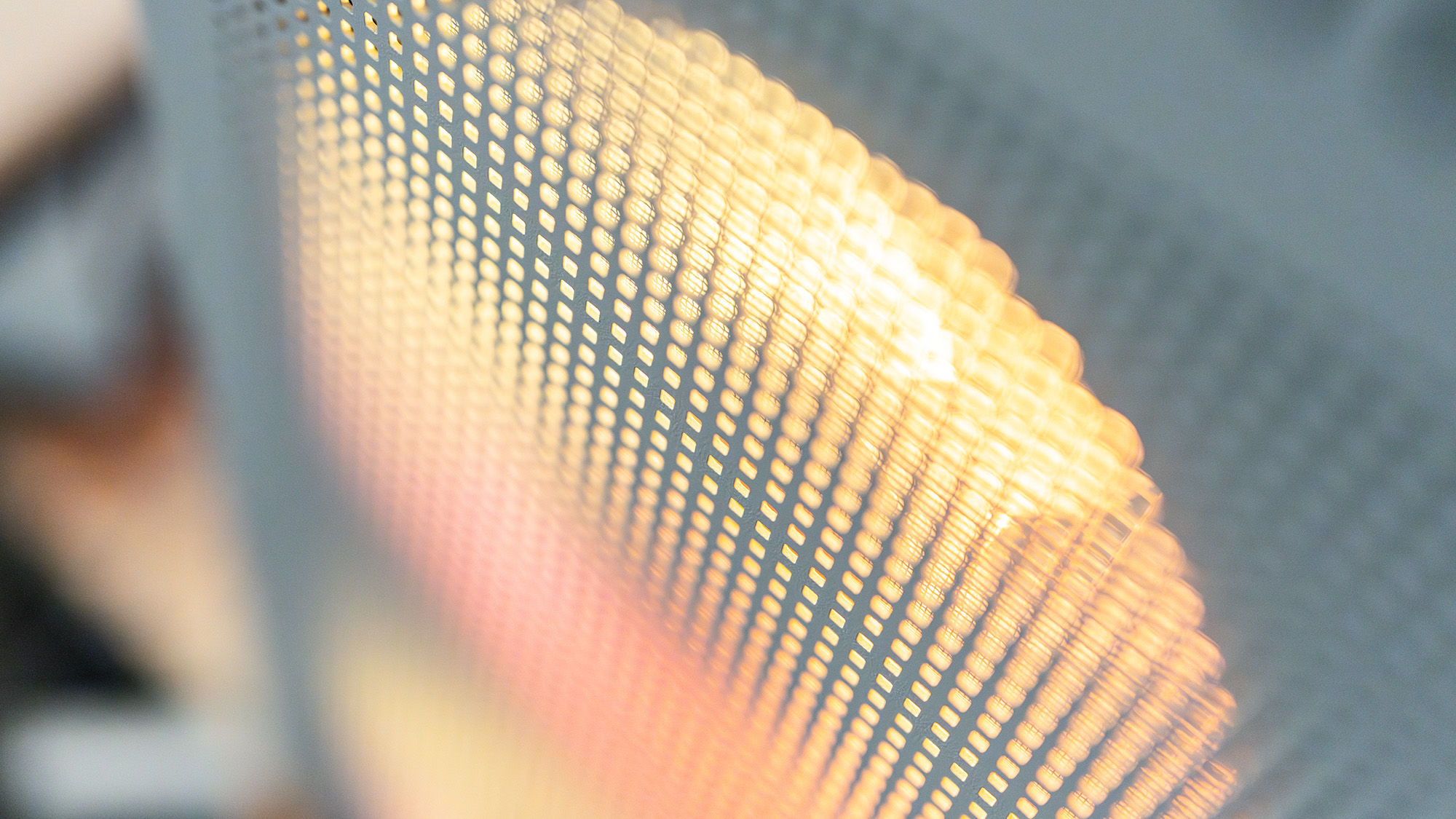
Specifications
Reasons to buy
Reasons to avoid
✅ You use demanding creative software: The powerful CPU and GPU will run everything quickly and smoothly.
✅ You handle large design files: 32GB RAM and 2TB storage provide ample workspace.
❌ You're on a tight budget: This is a premium machine with a price tag to match
❌ You only need basic computer capabilities: All this power could be overkill for simple tasks.
🔎 HP Omen 35L is a top-end gaming PC loaded with the latest tech, and it'll crunch through resource-intensive design tasks. ★★★★½
What you need to know: A gaming PC that's also equipped to churn through the intense processing demands of rendering tasks, the Omen 35L is an impressive embodiment of the philosophy of 'look the part, be the part', memorably coined by The Wire's Proposition Joe. This means that not only does it boast one of the latest Intel processors and a beefy NVIDIA GPU, but it also has about as chic a design as you could reasonably expect from a desktop tower PC, with an all-white case, a transparent side panel and built-in lighting rigs. Of course, all this does come at a pretty premium price.
Design: As mentioned, this is a good-looking PC, but it's well built too, with the components contained in a solid, durable case. HP has opted to put lights all over absolutely everything, which you may enjoy, or you may not, but overall we found the effect to be rather pleasing. The transparent side-panel definitely gives it a gamer look, which may not appeal to everyone, but all the same, you'd be churlish to describe this as anything other than a very thoughtfully designed PC.
Performance: Here's where things really kick into high gear. The Omen 35L boasts the second generation of Intel Core Ultra processors, and it really lets them rip. The Geekbench multicore CPU results were very impressive, just as expected, but designers will be pleased to hear that it's graphical performance where things really shine, with the discrete Nvidia GPU blowing Apple's M4 out of the water. It handled beefy denoising tasks on 60MP files in a matter of seconds, and will do the same with pretty much any graphic design task you'd care to put to it. The only slight reservation we had was in the performance of the storage drive – the 300 MB/s transfer speeds we recorded seemed slow for a machine at this spec.
Pricing: No doubt, this is an expensive purchase. While we do feel it offers decent value for professional designers seeking a high-performance workstation, there are also plenty more great computers for graphic design, and the M4 Mac mini in our top spot offers far greater value. But if you are strongly averse to Apple and need a top-line computer for intense work, the inclusion of top-tier components and generous storage justifies this investment.
Attributes | Notes | Rating |
|---|---|---|
Price | Premium in all senses | ★★★★ |
Design | A chic, all-white, lit-up look | ★★★★ |
Performance | Outstanding level of power | ★★★★★ |

"HP has loaded this Omen 35L gaming PC with the latest tech. It’s expensive, but the capability it will bring makes it well worth the outlay."
Best budget computer for graphic design
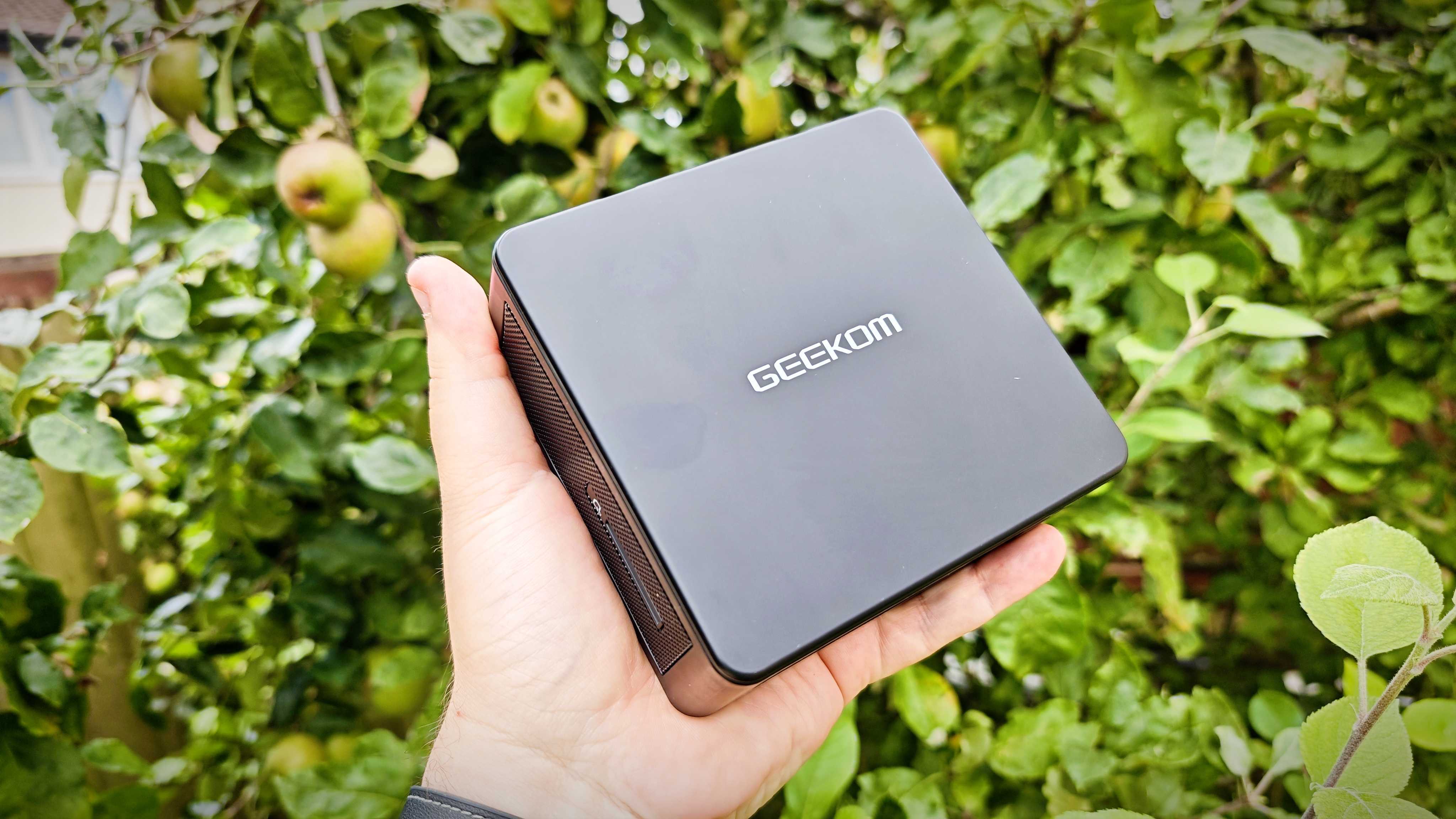
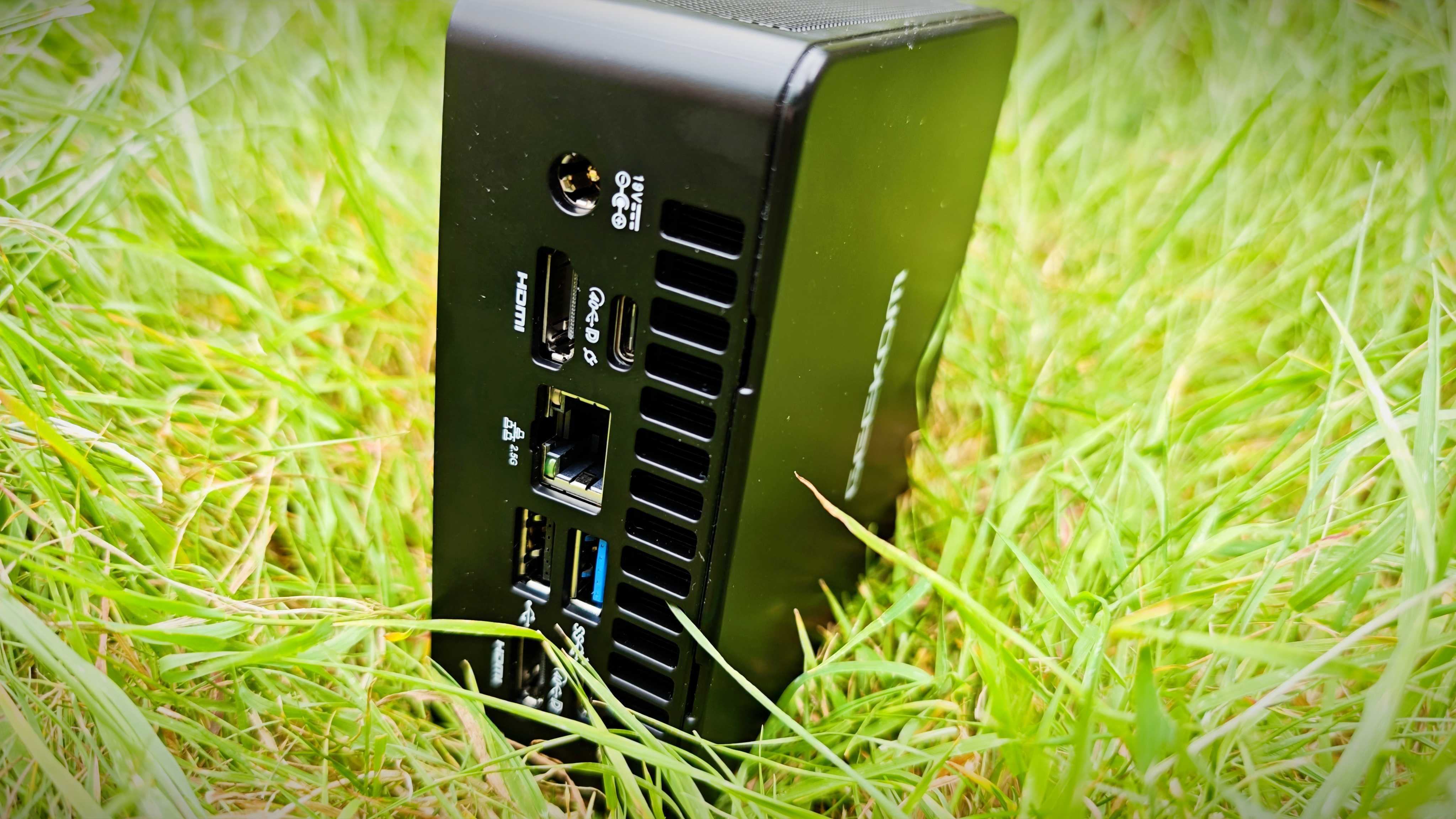
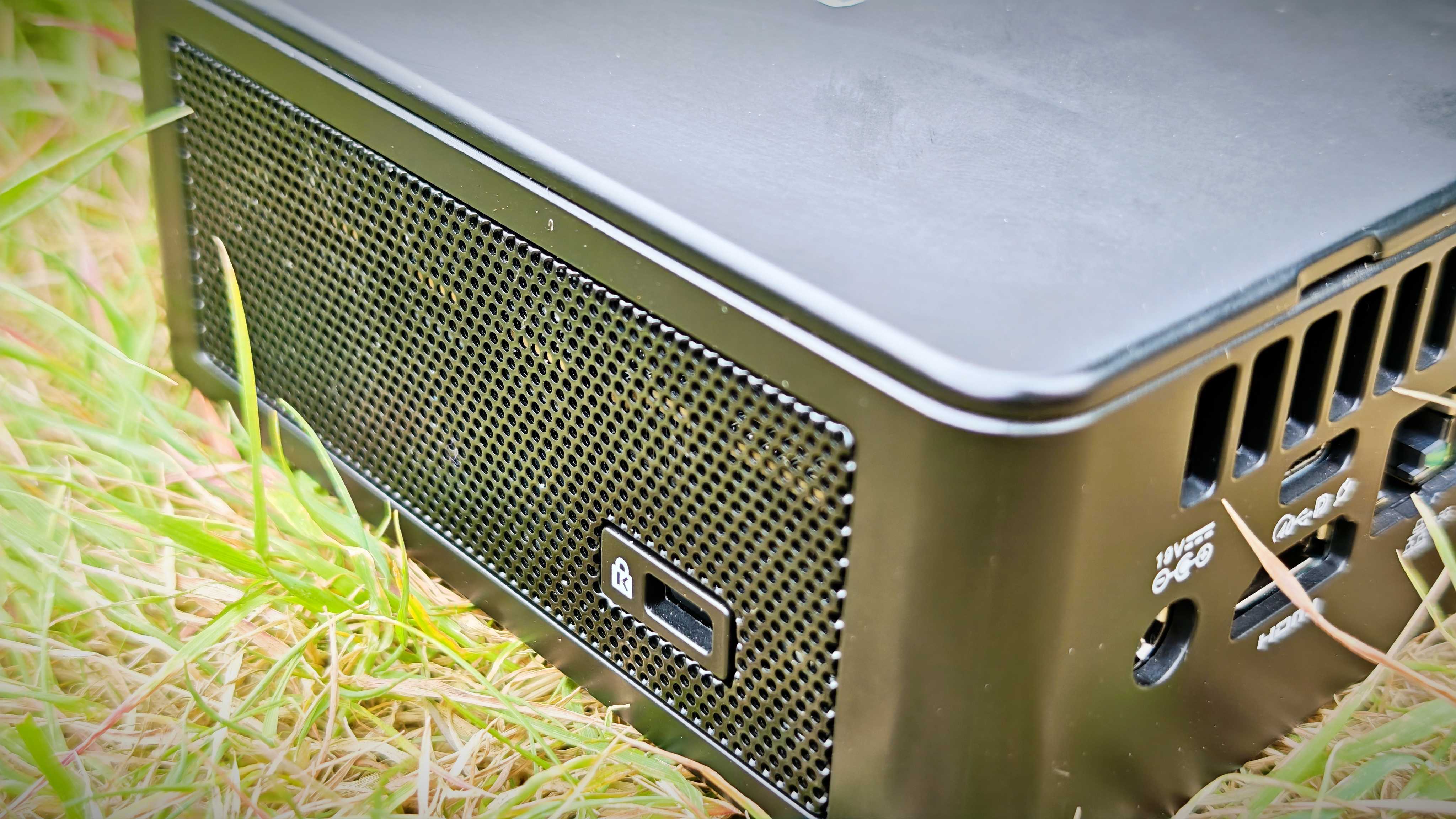
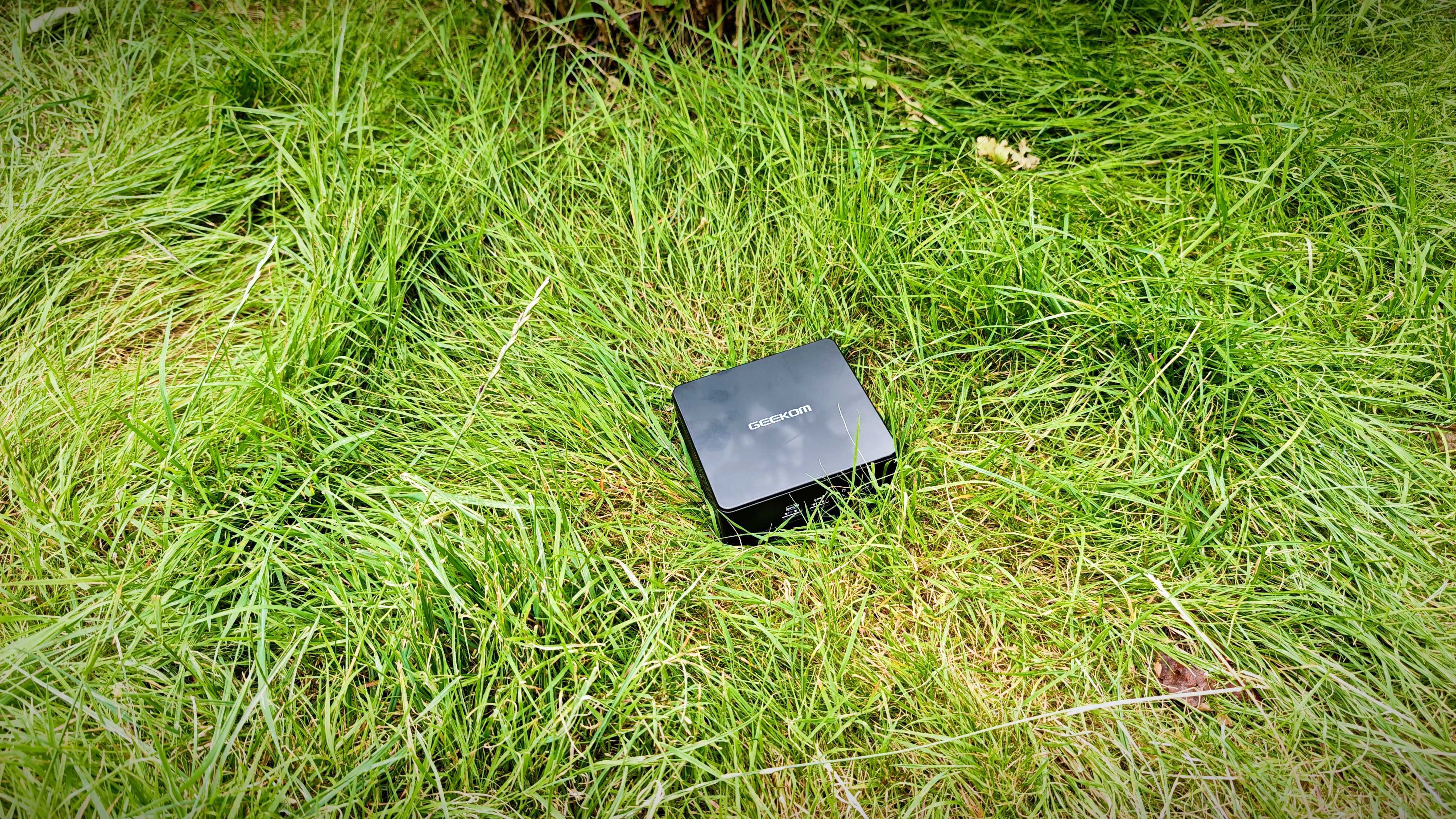

Specifications
Reasons to buy
Reasons to avoid
✅ You need portability: The compact 593g design makes it perfect for hot-desking or travel.
✅ You want desktop power under a grand: Outstanding CPU performance at an accessible price point.
❌ You work extensively with video: The integrated graphics struggle with demanding moving-image tasks.
❌ You need a complete setup immediately: You'll need to budget for a monitor separately.
🔎 Geekom IT15 delivers exceptional CPU performance in an ultra-compact package, making it ideal for designers who don't require discrete graphics power. ★★★★
What you need to know: The Geekom IT15 represents a genuine Windows alternative to the Mac mini, packing impressive specifications into an incredibly compact form factor. With 32GB of RAM and 2TB of storage as standard, plus the latest Intel Core Ultra 9 processor, it delivers professional-grade CPU performance at a sub-$1,000 price point. While the integrated Intel Arc 140T graphics won't match discrete GPUs, the CPU excels at photo editing and productivity tasks, making this an excellent choice for designers on a budget.
Design: At just 117 x 112 x 45.5mm and weighing 593g, the IT15 is even more compact than the Mac mini, making it supremely portable for designers who work across multiple locations. The black casing combines metal and hardened plastic, feeling robust despite the budget-conscious build. Port selection is generous, with two HDMI ports, multiple USB-A and USB-C connections, and a welcome SD card slot on the side panel. Front-mounted USB ports and a headphone jack provide convenient access for peripherals.
Performance: The Intel Core Ultra 9-285H processor delivers outstanding results in CPU-intensive tasks, scoring 26,070 in Geekbench multi-core tests and 2,099 in Cinebench, putting it ahead of many productivity laptops and on par with more expensive desktop systems. Creatives will appreciate the impressive PugetBench for Photoshop score of 7,768, making it a great option for graphic design and image editing. However, the integrated Arc 140T graphics, while capable of ray-tracing, falls short in GPU-intensive tasks like video editing and 3D rendering, performing similarly to productivity laptops rather than professional workstations.
Value: With retail prices often dipping under a grand, the Geekom IT15 offers exceptional value for CPU performance. It's competitive with the Mac mini's pricing while offering more RAM and storage in the base configuration, though you'll need to factor in a monitor purchase if you don't already have one.
Read more: Geekom IT15 review
Attributes | Notes | Rating |
|---|---|---|
Price | Outstanding value with discount code | ★★★★★ |
Design | Compact but plain aesthetics | ★★★★ |
Performance | Excellent CPU, middling graphics | ★★★★ |
Connectivity | Generous port selection | ★★★★ |

"The Geekom IT15 is a remarkably compact, well-built and ambitious mini-PC that might just be the new Windows alternative to the Mac mini."
Best all-in-one computer for graphic design
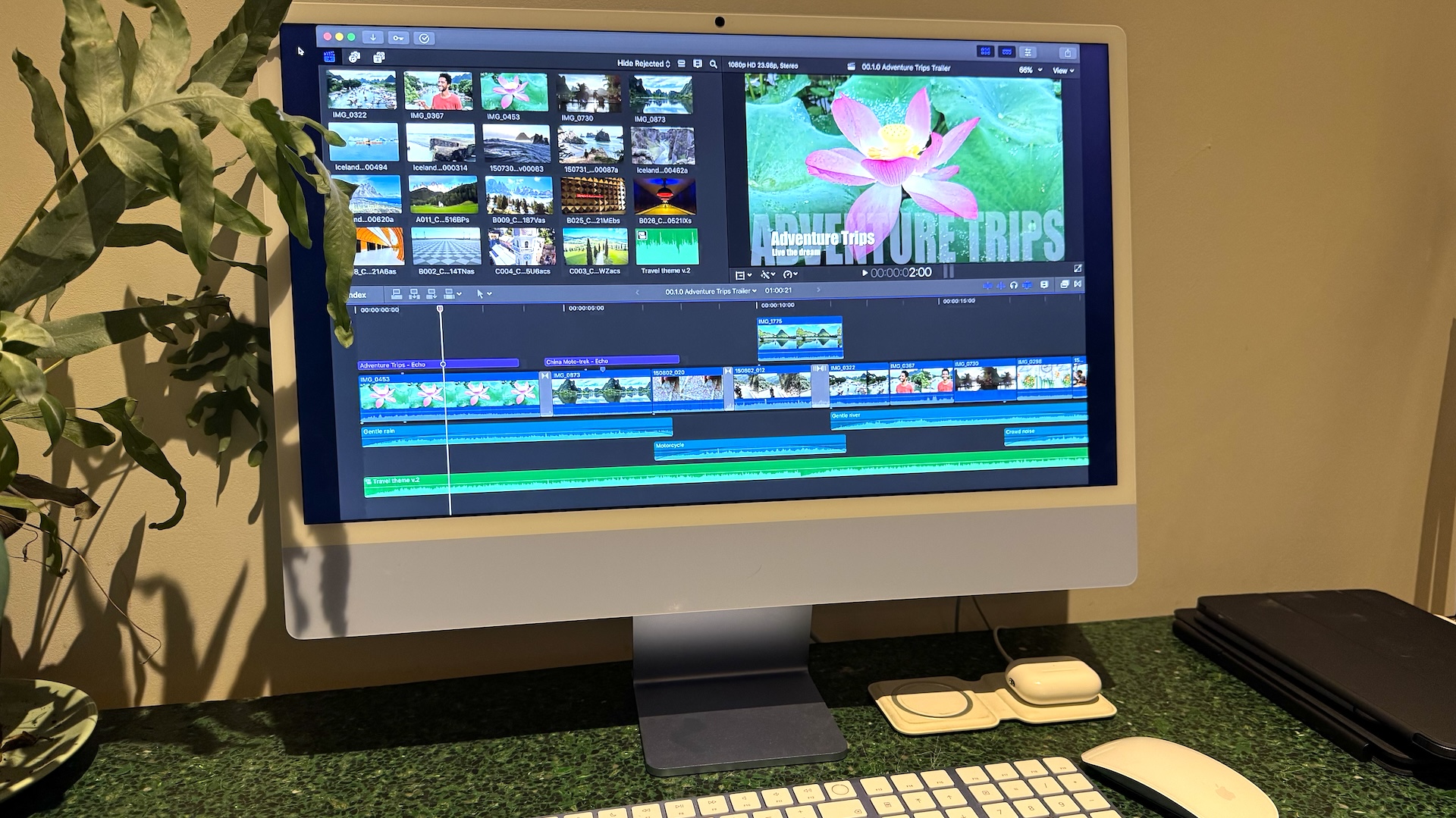
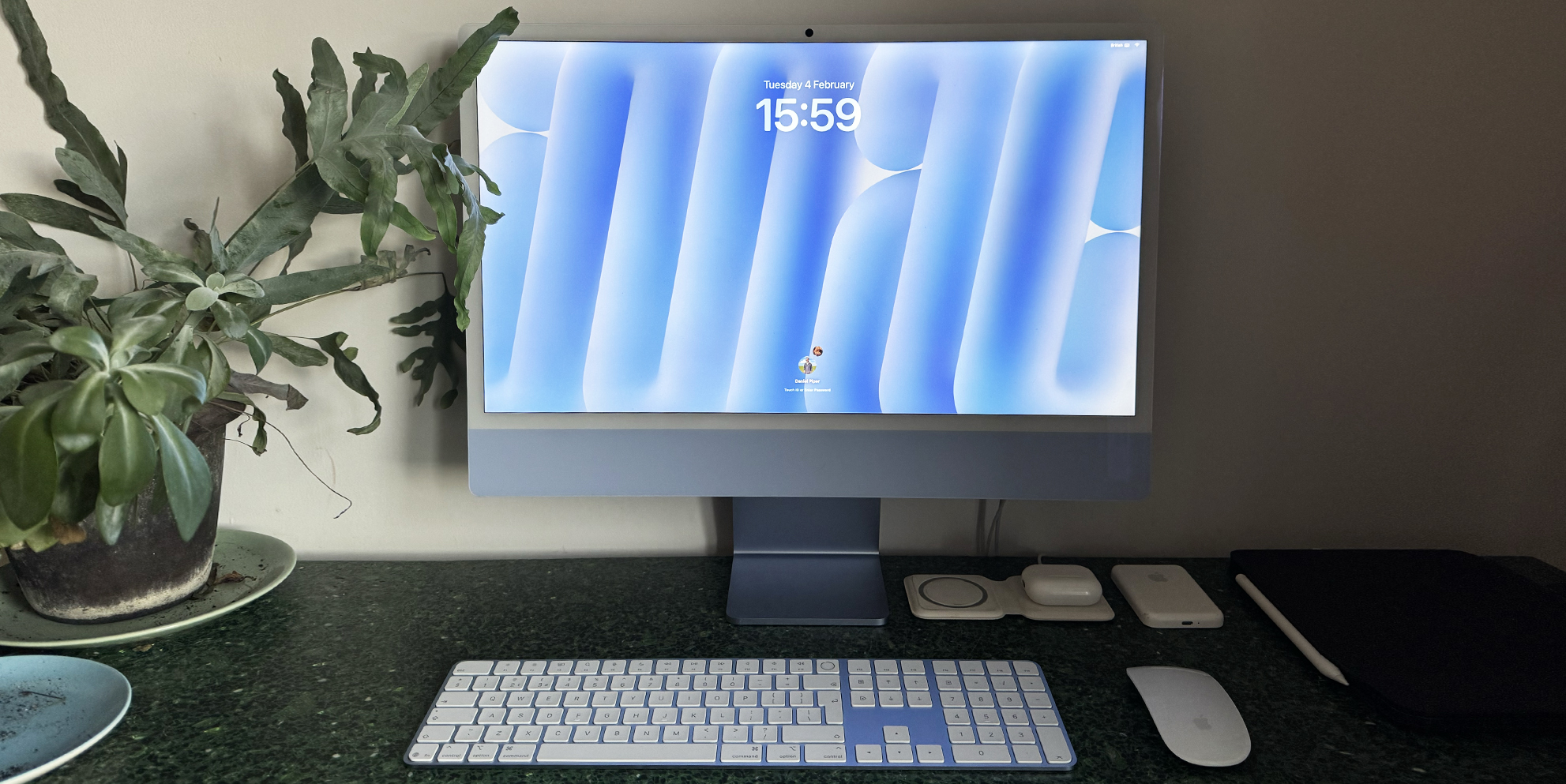
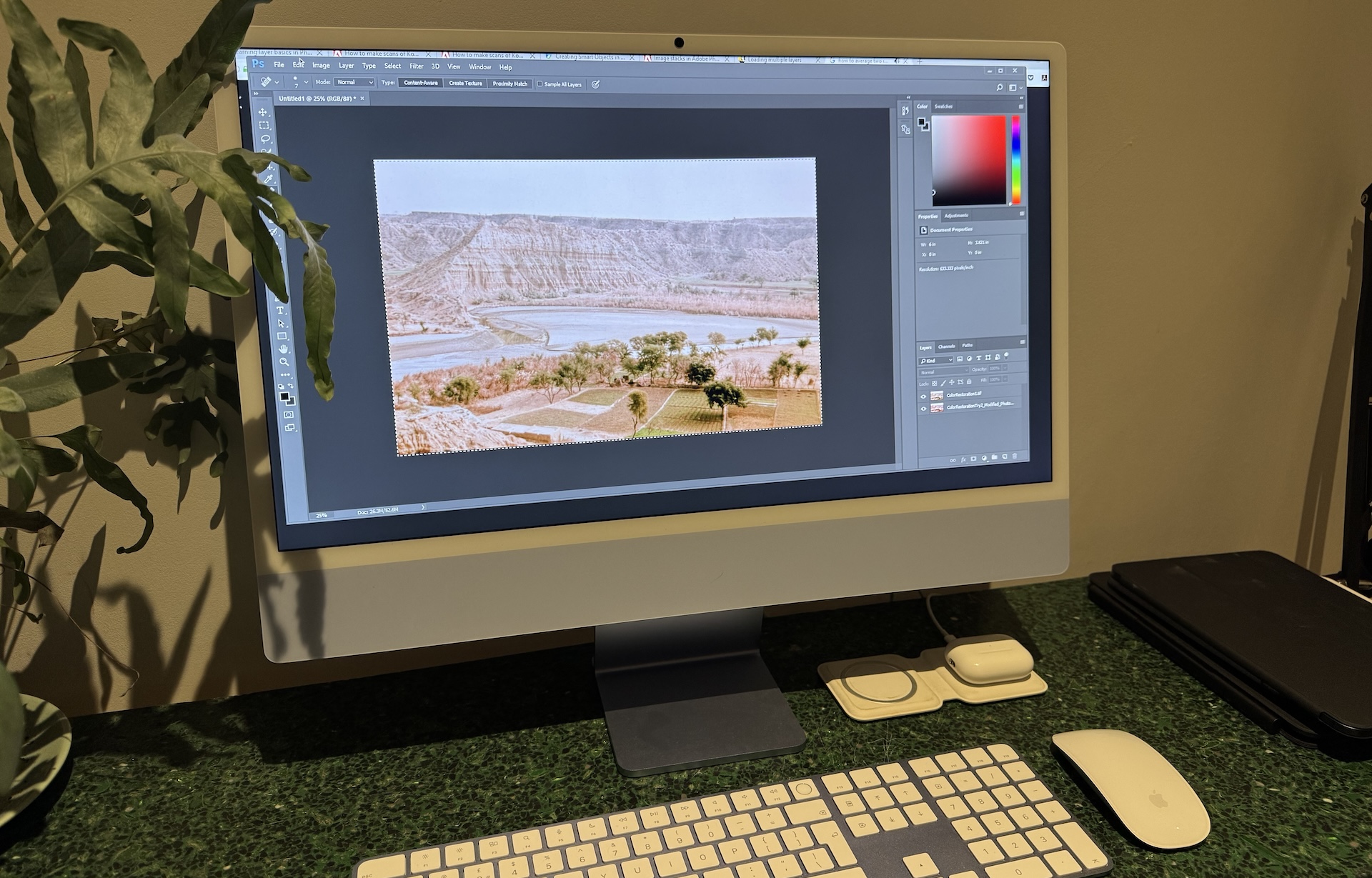
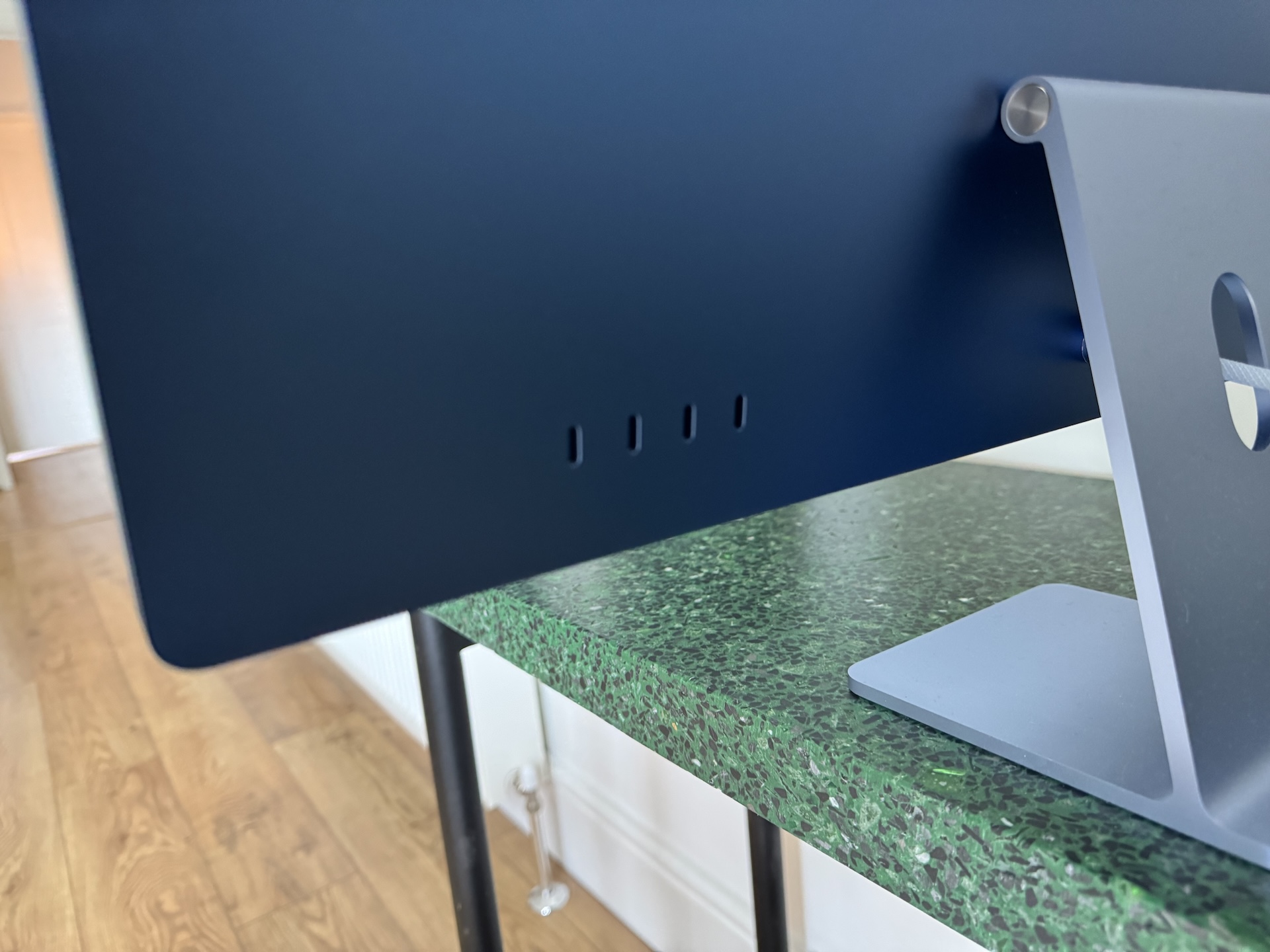
Specifications
Reasons to buy
Reasons to avoid
✅ You want an all-in-one solution: Everything comes in the box, colour-matched and ready to go.
✅ Screen quality is paramount: The 4.5K Retina display is perfect for detailed design work.
❌ You require something portable: This is a hefty all-in-one machine that lives on a desktop, not in a backpack.
❌ You want a screen larger than 24 inches: While the inside can be configured and upgraded, the screen size of 24 inches is fixed.
🔎 iMac M4 combines stunning design with impressive performance in an elegant all-in-one package that's ideal for most graphic design workflows. ★★★★
What you need to know: Apple's iMacs have always been popular among designers, and the 2024 iteration is unsurprisingly the most powerful yet. The base model offers 16GB RAM, which can be upgraded, and the lush 4.5K Retina Display is stunningly bright and perfectly calibrated. It's a hefty, expensive machine, but a superb option for designers who have the space and the budget.
Design: The impossibly thin profile (14.7cm) and vibrant colour options make this one of the most aesthetically pleasing computers we've ever tested. The clean, minimalist design includes thoughtful touches like colour-matched accessories and cables. Port selection varies by model, with higher-end versions offering four Thunderbolt 4 ports. The display is stunning – but its 24-inch size may not be enough for all designers, with some users preferring a little more visual real estate.
Performance: The M4 chip delivers approximately 20% better CPU performance than its predecessor, with the Neural Engine capable of 38 trillion operations per second. We found that this translates to smooth performance in professional design applications like Adobe Creative Suite, Sketch, and Figma – the iMac M4 effortlessly handled every task we threw at it. Of course, while the base 16GB RAM we tested offers superb multitasking capabilities, power users (say, 3D designers) have to the option to go for 32GB.
Pricing: Starting at £1,299 (£200 less than the previous generation), the iMac M4 is expensive, but excellent value for an all-in-one design workstation. While the nano-texture display adds £200 to the price, it's worth considering for studios with challenging lighting conditions. This is a pretty niche prospect as a computer – basically, if you fit in the niche of someone who needs a high-powered computer that stays in one place, and doesn't mind a 24-inch screen, it's a sure thing. Otherwise, the Mac Mini in our number-one spot may prove the sounder buy.
Attributes | Notes | Rating |
|---|---|---|
Price | Good value if it fits your niche | ★★★ |
Design | Beautiful, but is the display big enough? | ★★★★ |
Performance | Faultless for design work | ★★★★★ |
Connectivity | USB-C offers plenty of options | ★★★★ |

"If you're a designer who cares about aesthetics, needs a healthy dose of processing power, has budget to play with and is happy to stay in one place, the iMac is perfect."
Most powerful computer for graphic design
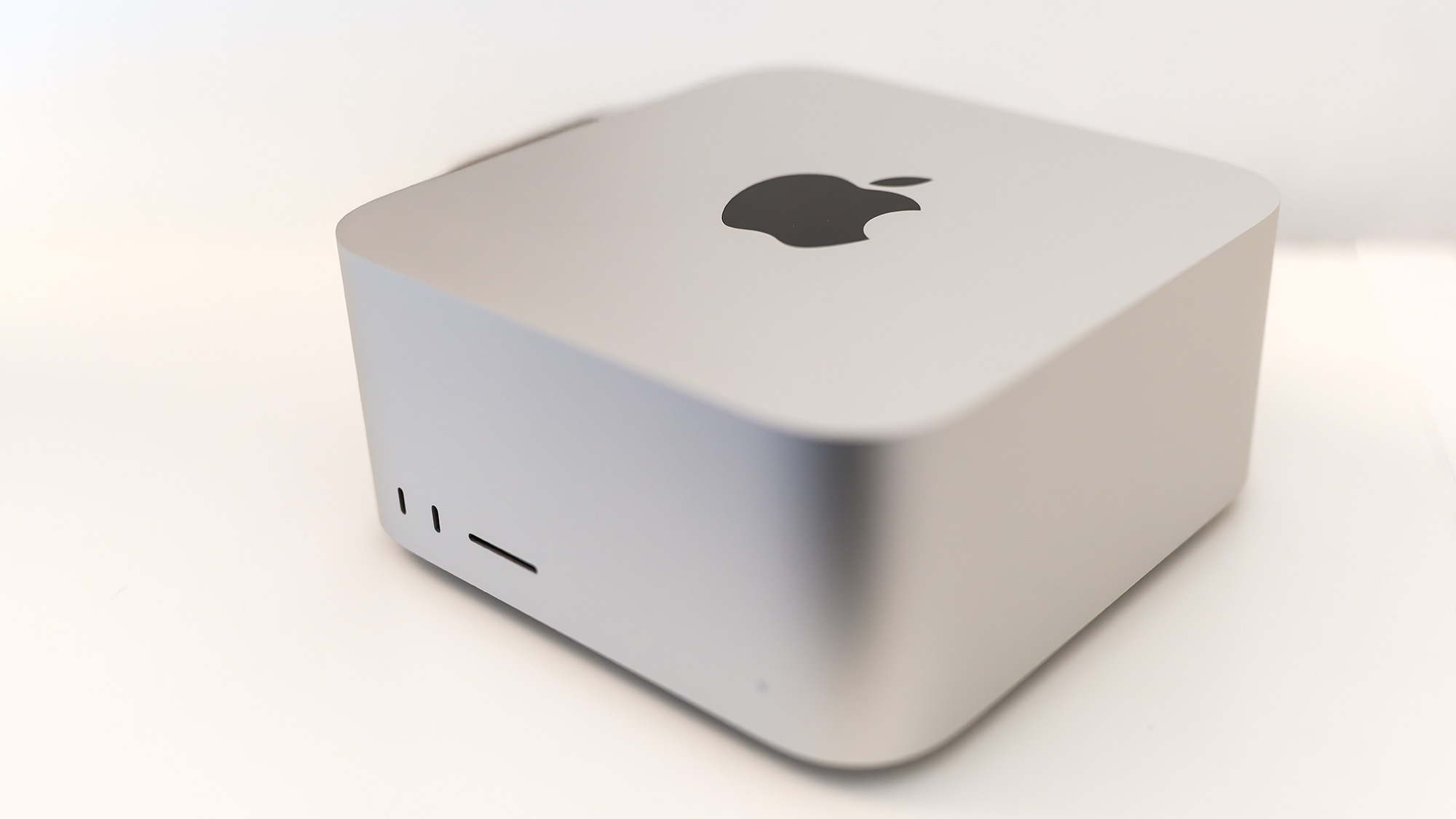
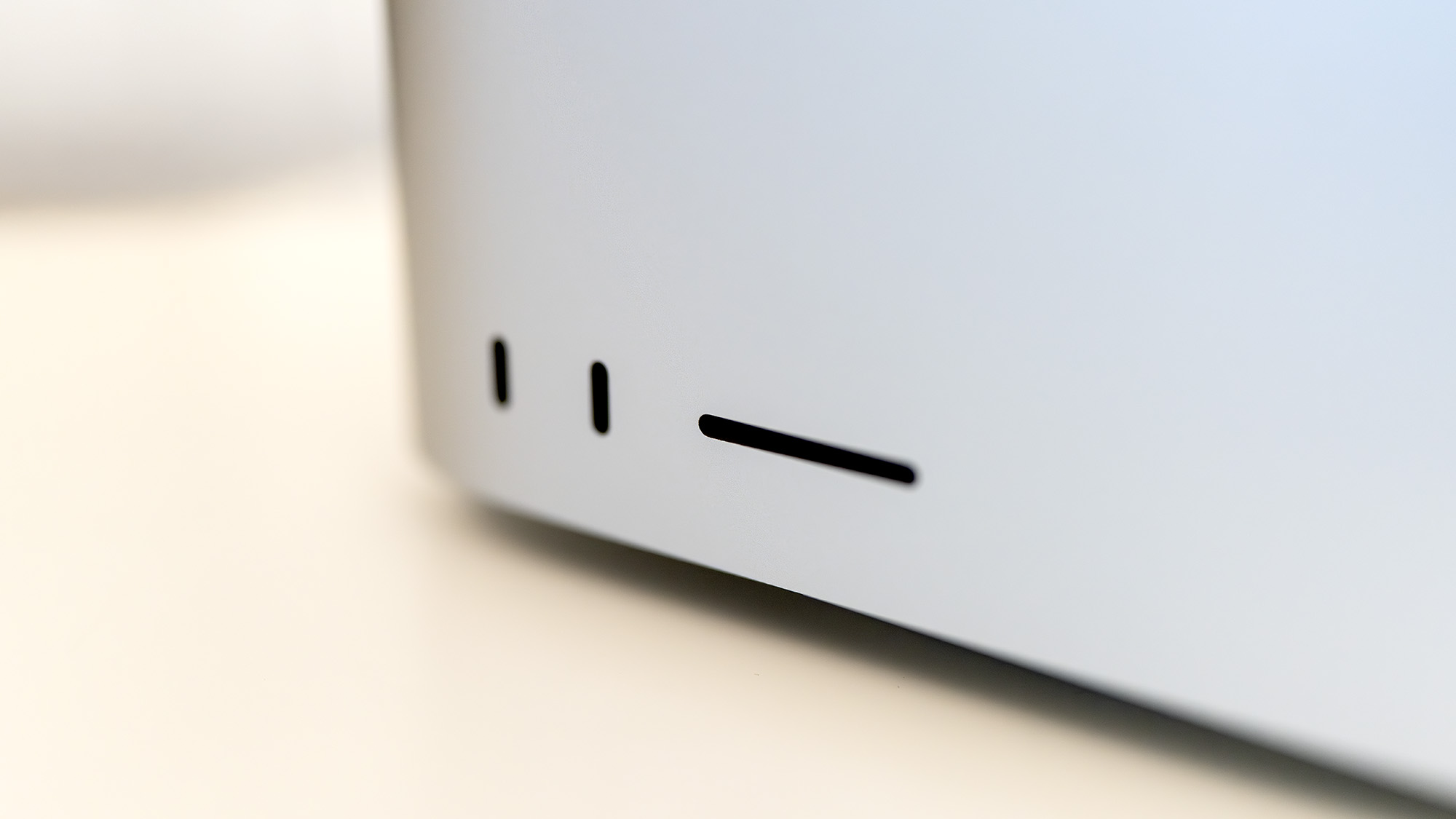
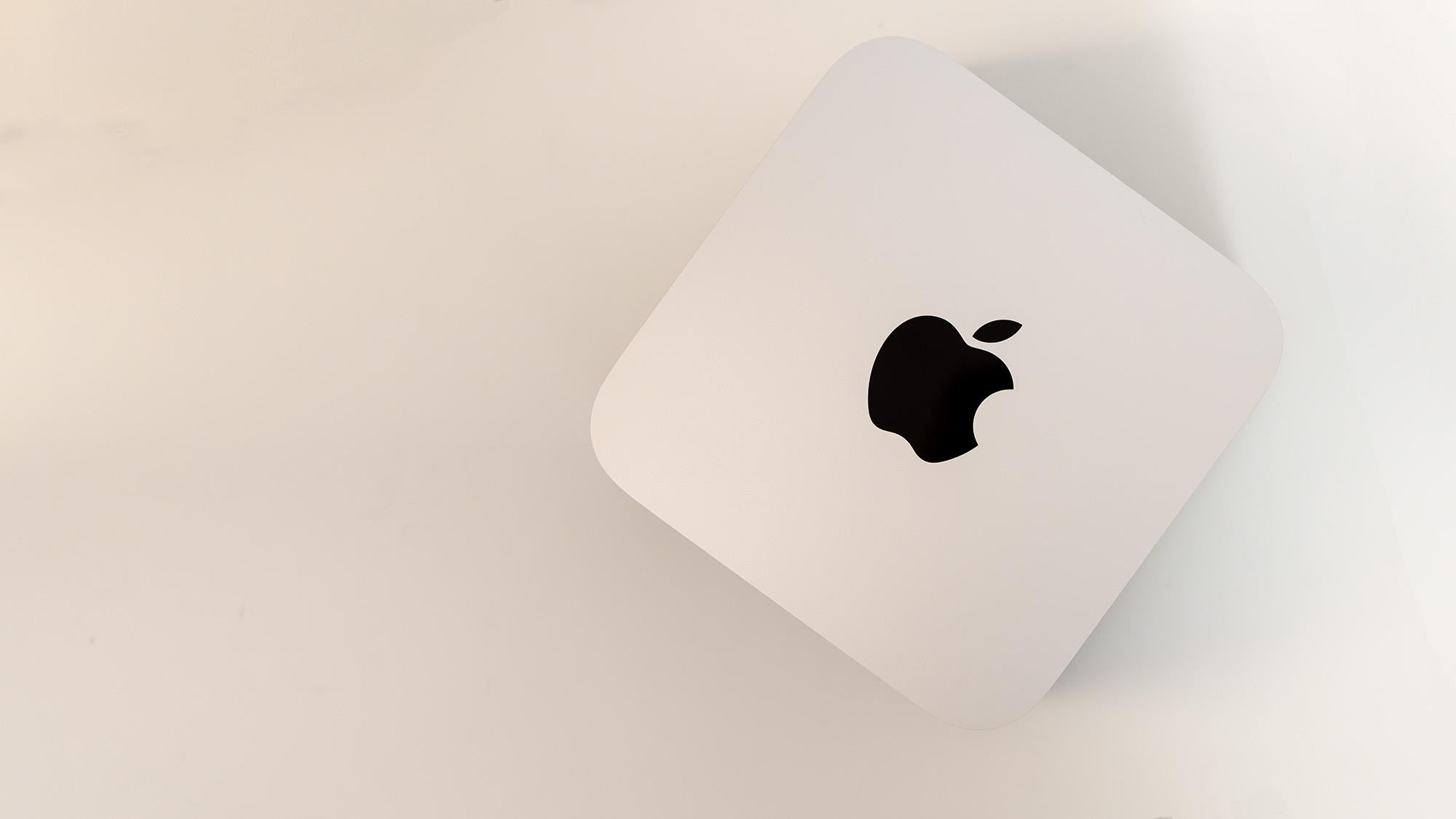
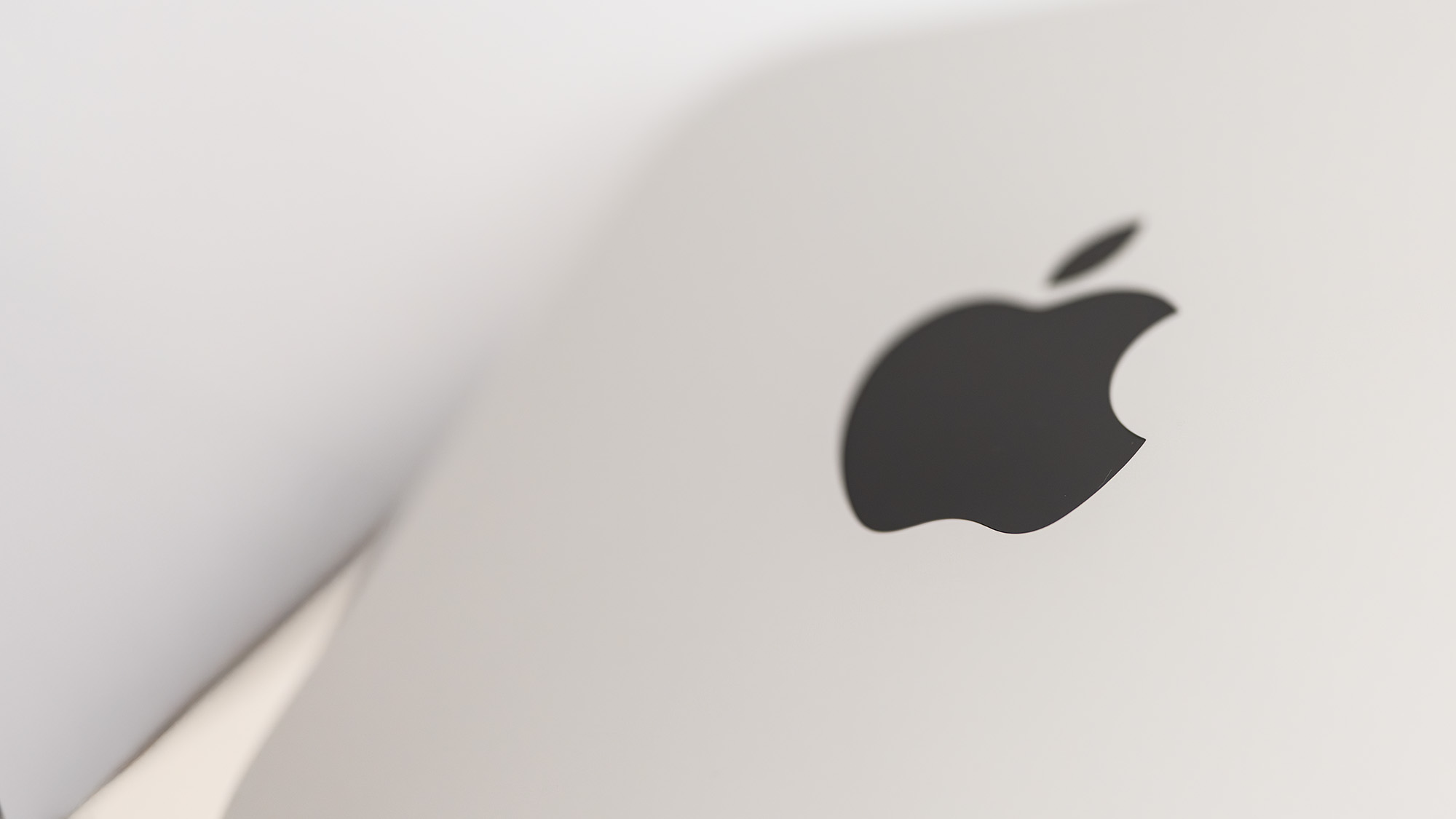
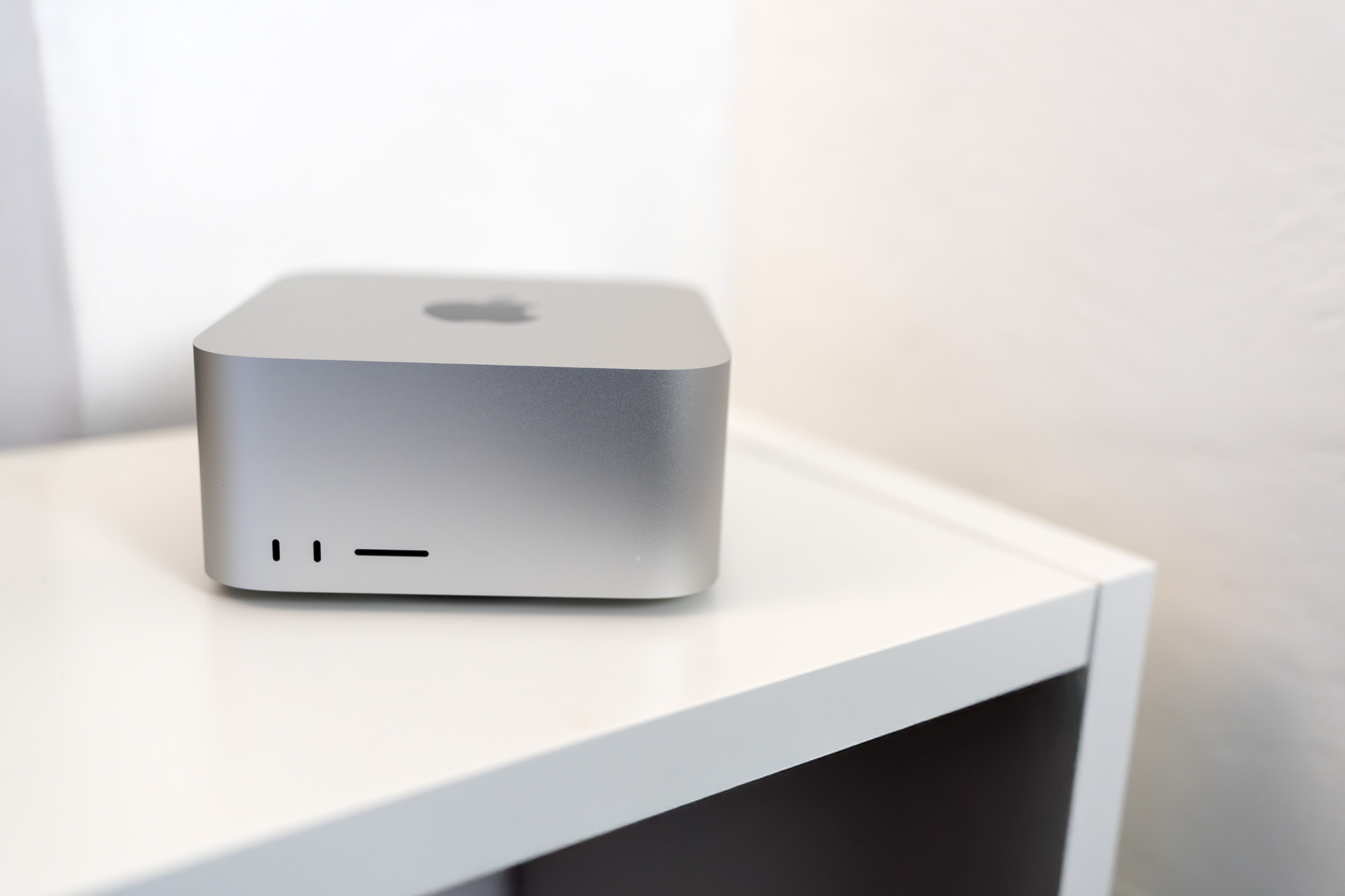
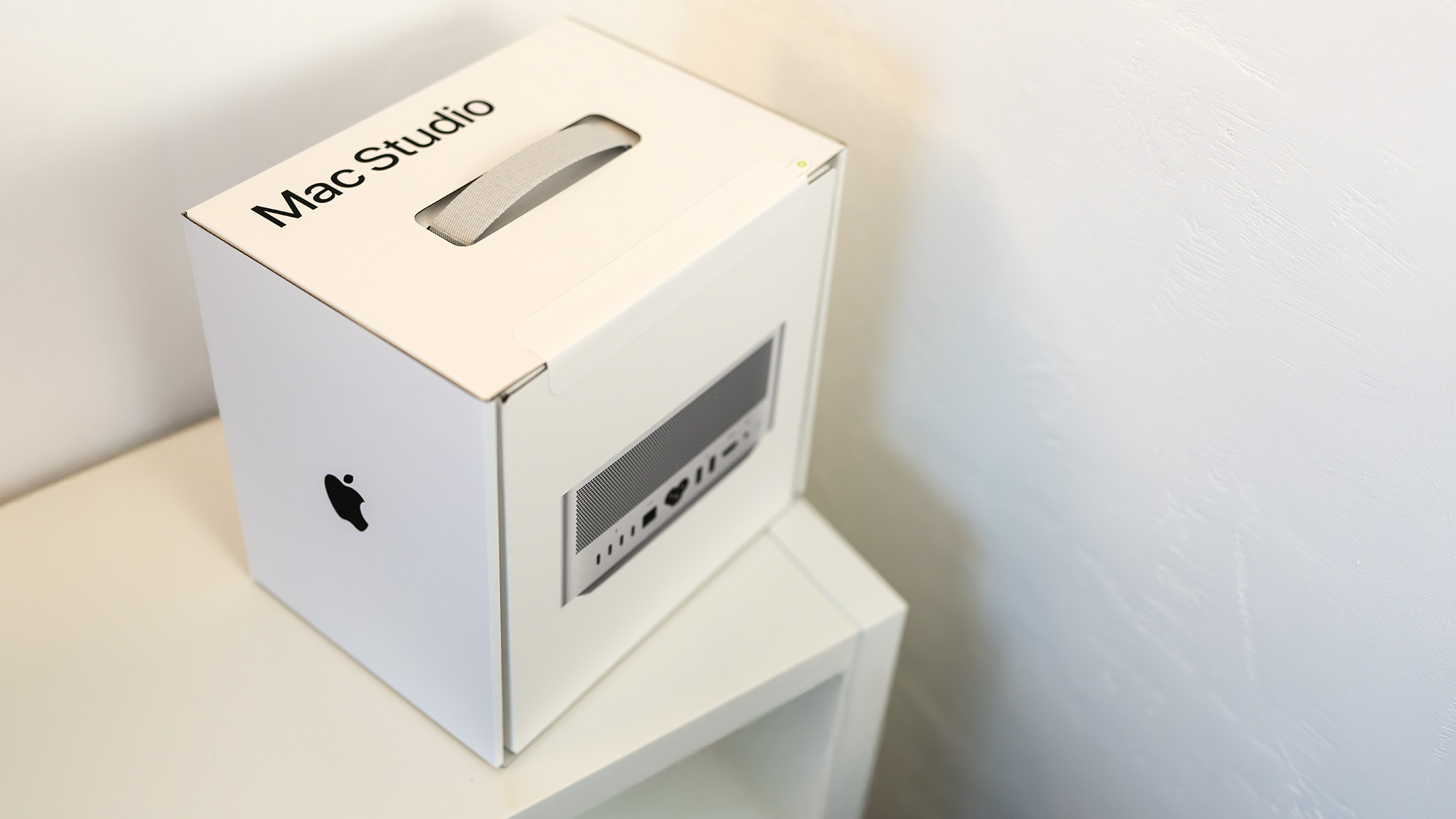
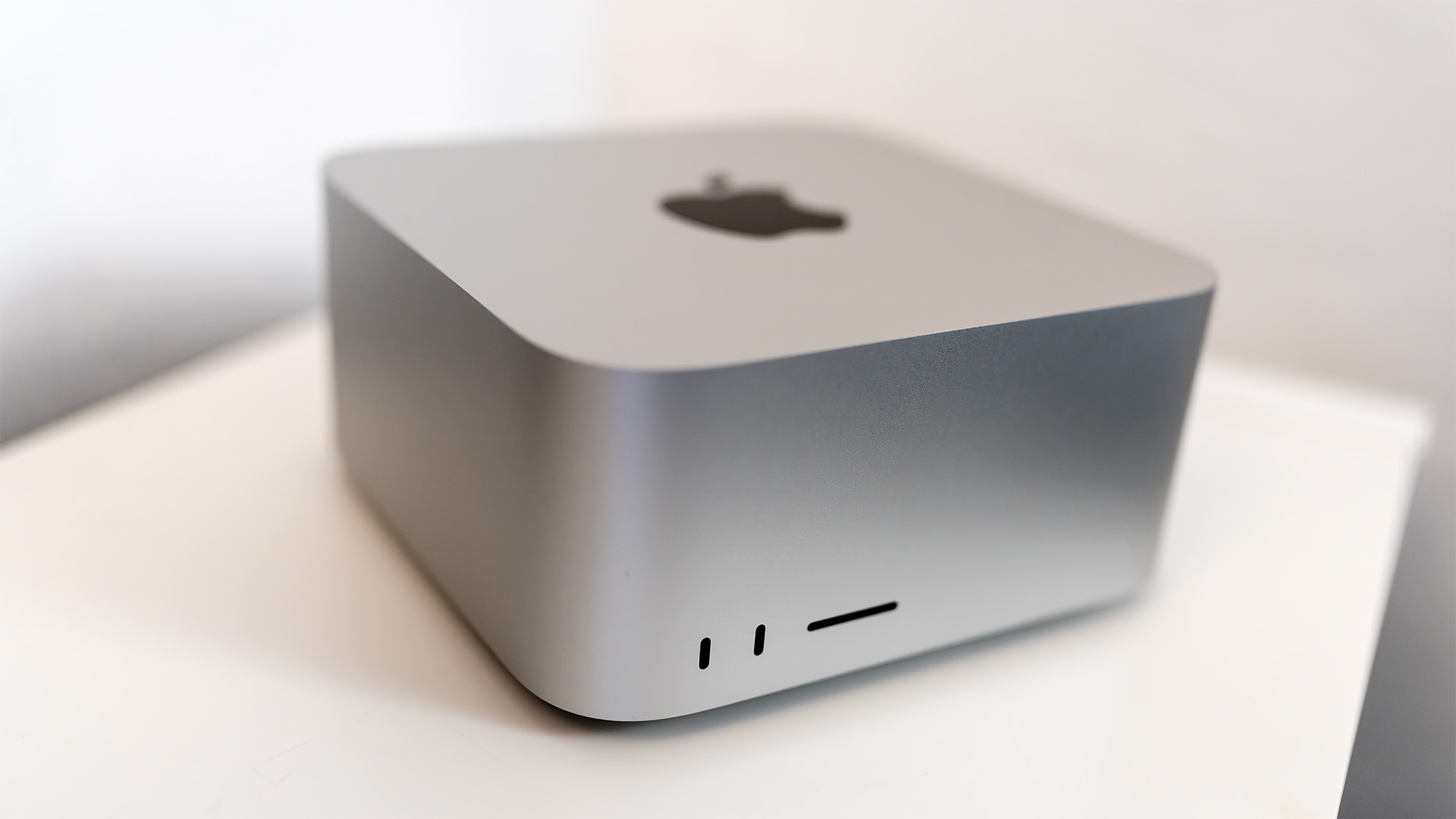
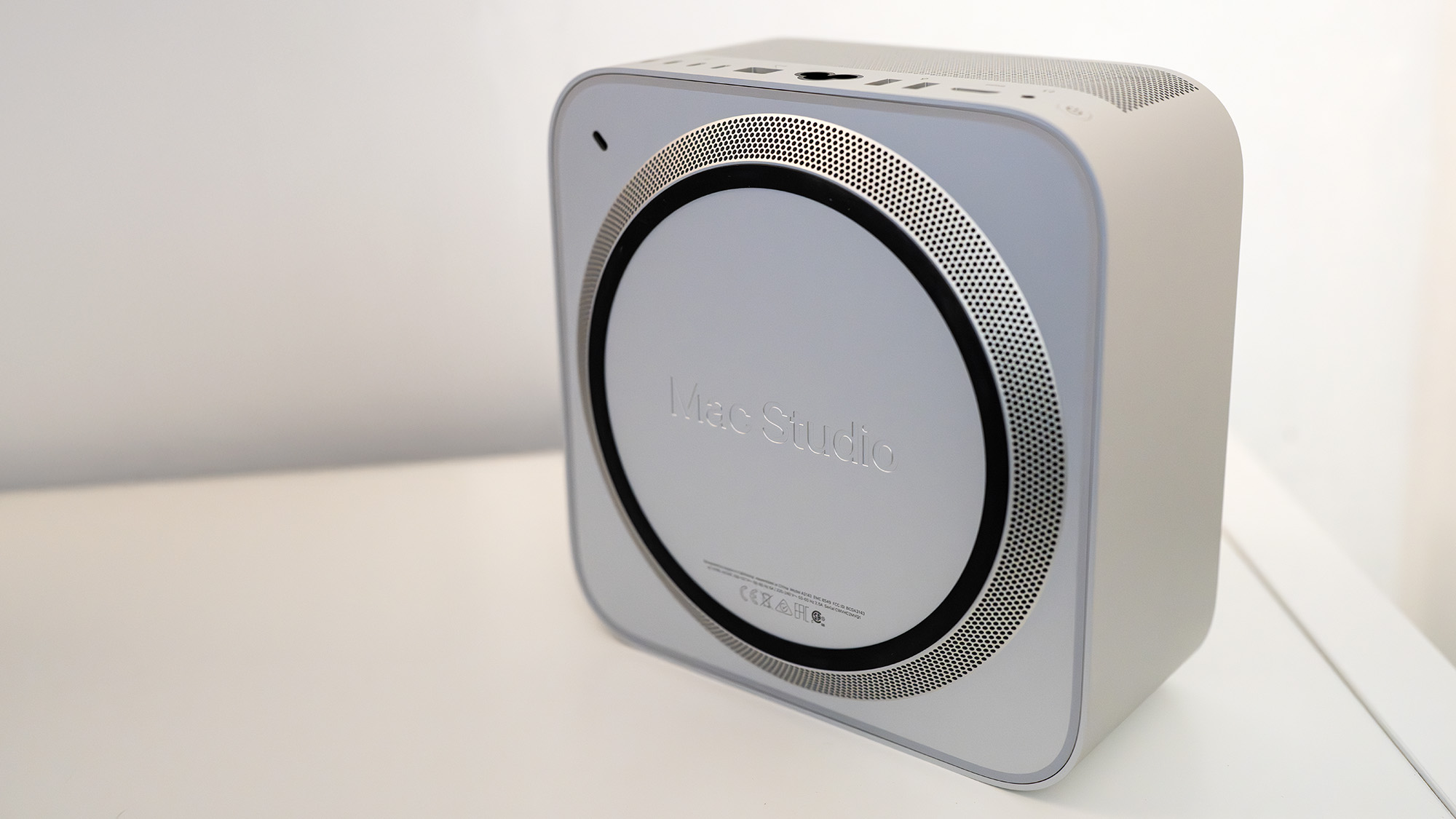
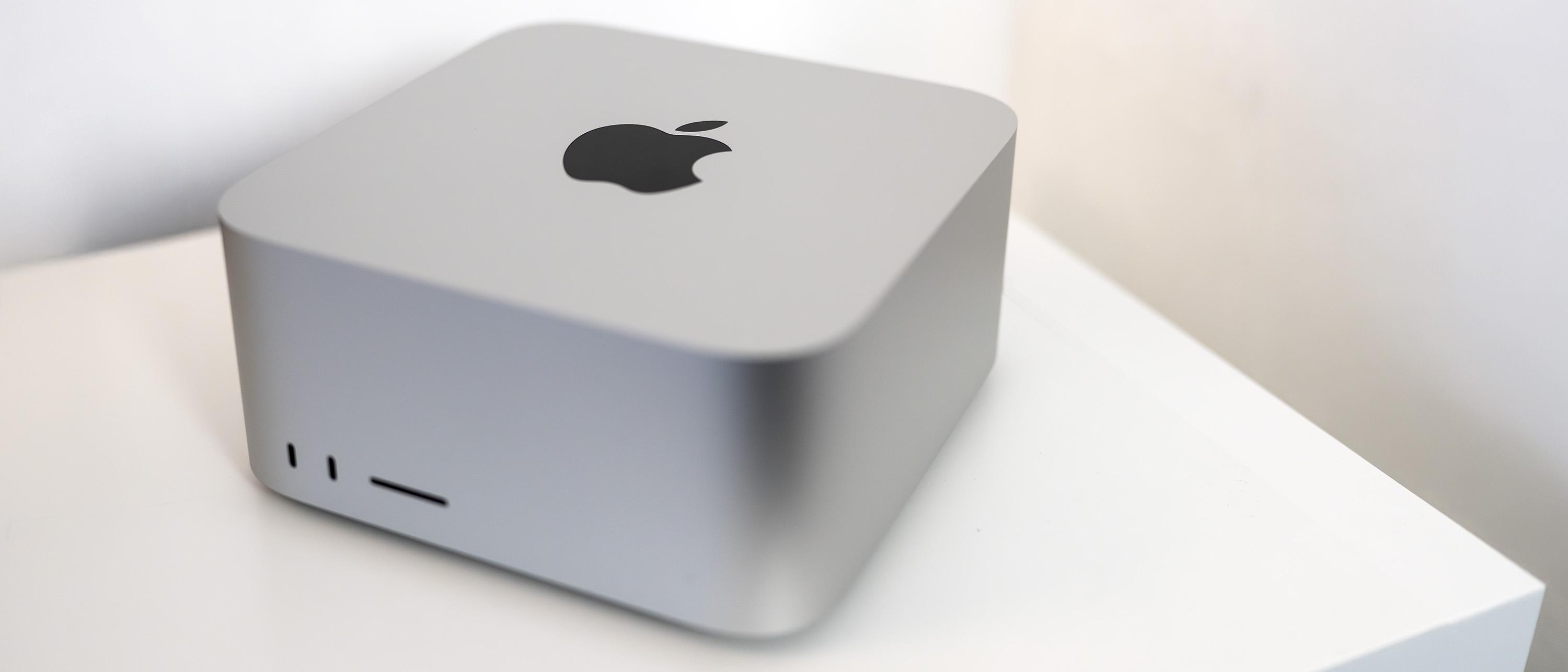
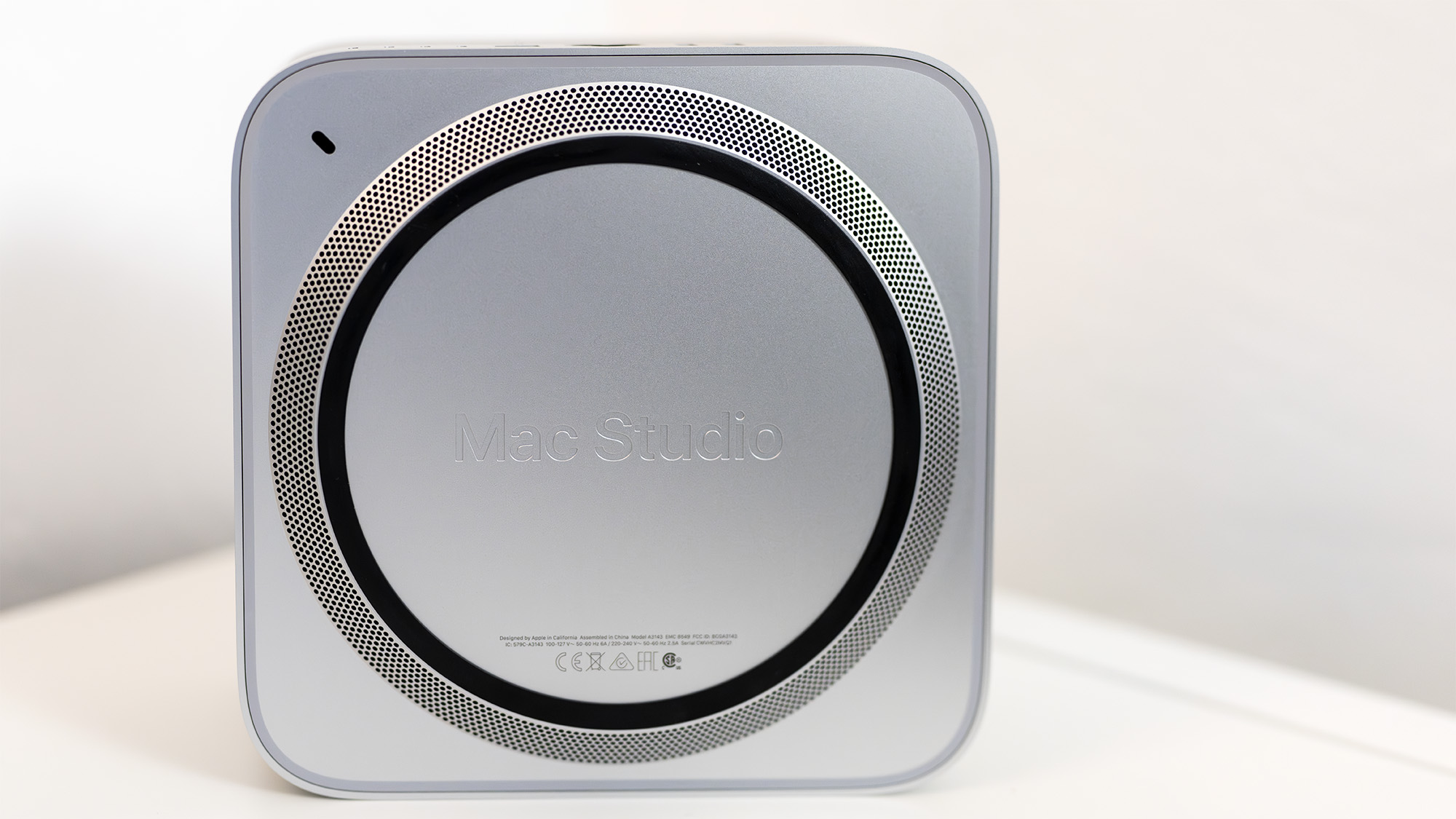

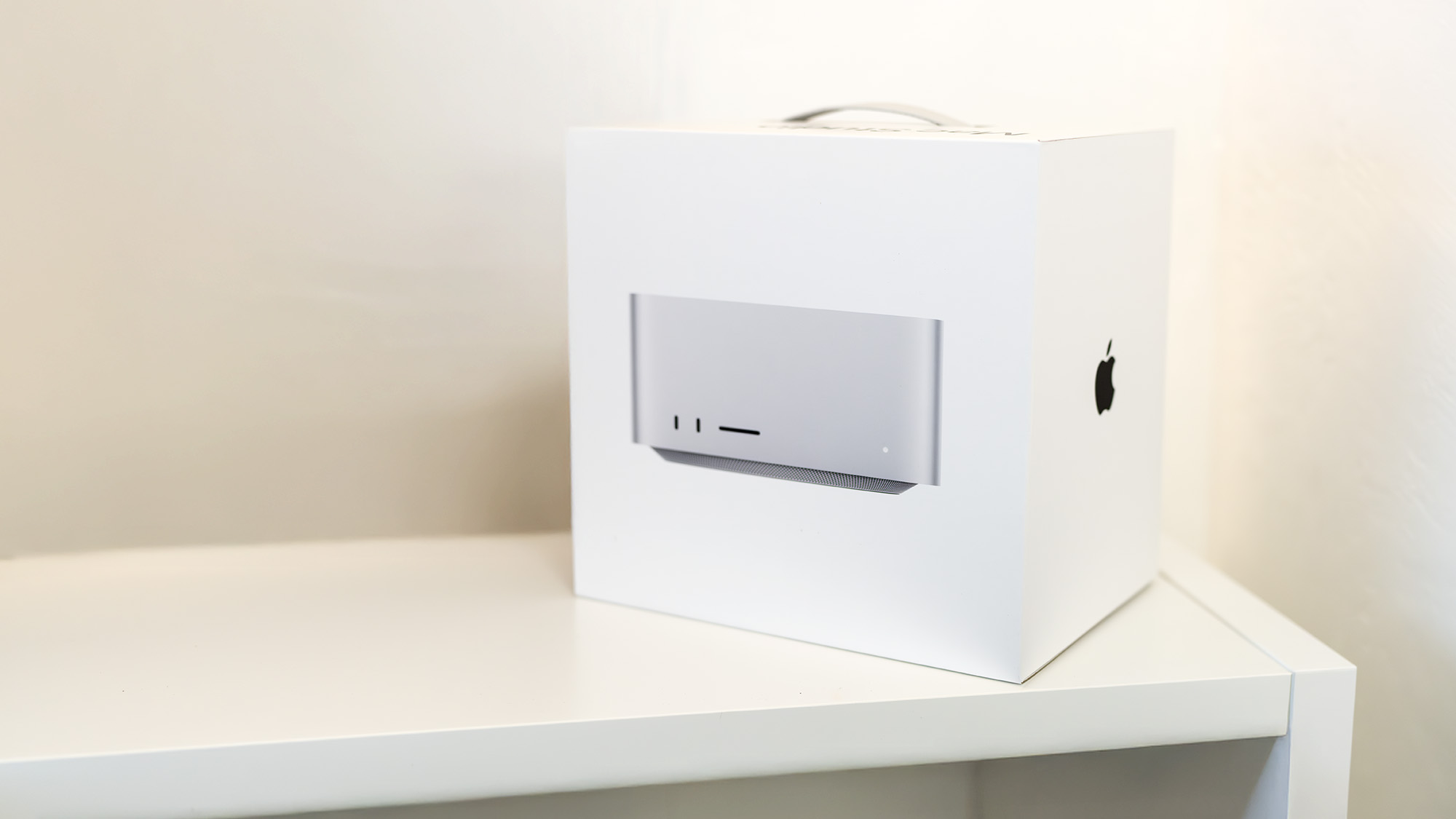
Specifications
Reasons to buy
Reasons to avoid
✅ You handle complex creative workflows: The M4 Max excels at video editing, 3D rendering, and running multiple demanding applications simultaneously.
✅ You value compact, quiet operation: Desktop power without the noise and bulk of traditional workstations.
❌ You're on a tight budget: Prices start at $1,999 and climb rapidly with upgrades.
❌ You prefer Windows software: This is a Mac-only solution requiring macOS compatibility.
🔎 Mac Studio M4 Max combines desktop-class performance with remarkably compact and quiet operation, making it the ultimate choice for professional creatives with demanding workflows. ★★★★★
What you need to know: The Mac Studio M4 Max is Apple's most powerful compact desktop, delivering performance that rivals larger workstations while maintaining the quiet, efficient operation it's known for. With its 16-core M4 Max chip and up to 128GB of unified memory, it handles the most demanding creative tasks (from 4K video editing to complex 3D rendering) without breaking a sweat. While the price is substantial, particularly with upgrades, the combination of raw power, refined design and silent operation makes it an exceptional investment for professional designers, video editors, and 3D artists.
Design: The Mac Studio maintains its distinctive compact form factor at 9.5 x 19.7 x 19.7cm, sitting somewhere between the Mac mini and traditional tower PCs. The solid aluminium construction exudes quality, and thoughtful design touches include front-mounted USB-C ports (10Gbps) and an SD card reader for convenient access. Around the back, four Thunderbolt 5 ports, two USB-A connections, HDMI 2.1 and 10Gbps Ethernet provide comprehensive connectivity. The Studio supports up to five external displays simultaneously (two more than the Mac mini), making it ideal for multi-monitor workflows. Despite the plain exterior, the unboxing experience feels premium, with Apple's characteristic attention to packaging detail.
Performance: The M4 Max delivers truly exceptional performance across all creative applications. In Cinebench 2024, it achieves a multi-core score of 2,099 and GPU score of 16,697, positioning its graphics capability between the RTX 4060 and RTX 4070 Super desktop cards. The system scored 13,912 in PugetBench for Photoshop and 8,764 in DaVinci Resolve, competing directly with Windows workstations equipped with high-end discrete GPUs. In Topaz Video AI, it posted a combined score of 884.23; more than double the MacBook Air M4 and competitive with dedicated graphics solutions. Remarkably, the Studio remains virtually silent even under sustained workloads, with the internal cooling system operating imperceptibly during normal use.
Value: Starting at $1,999 for the base model, the Mac Studio M4 Max requires significant investment, with our tested configuration (128GB RAM, 1TB storage) priced at $3,699. While expensive, the performance-per-watt efficiency, compact footprint, and silent operation justify the premium for professionals who can fully utilise the power. Windows alternatives with comparable GPU performance exist at lower prices, but lack the refined integration of hardware and software that defines the Mac experience.
Read more: Apple Mac Studio M4 Max
Attributes | Notes | Rating |
|---|---|---|
Price | Premium pricing justified by performance | ★★★ |
Design | Refined, compact, excellent connectivity | ★★★★★ |
Performance | Outstanding across all creative tasks | ★★★★★ |
Connectivity | Expensive but exceptional for power users | ★★★ |

"It’s overkill for many situations: Photoshop will run almost as well on much cheaper machines, as will a web browser. But if you’re video editing, rendering, using AI or perhaps doing all three things at once, the Mac Studio is one of the best desktop PCs around."
Best gaming computer for graphic design
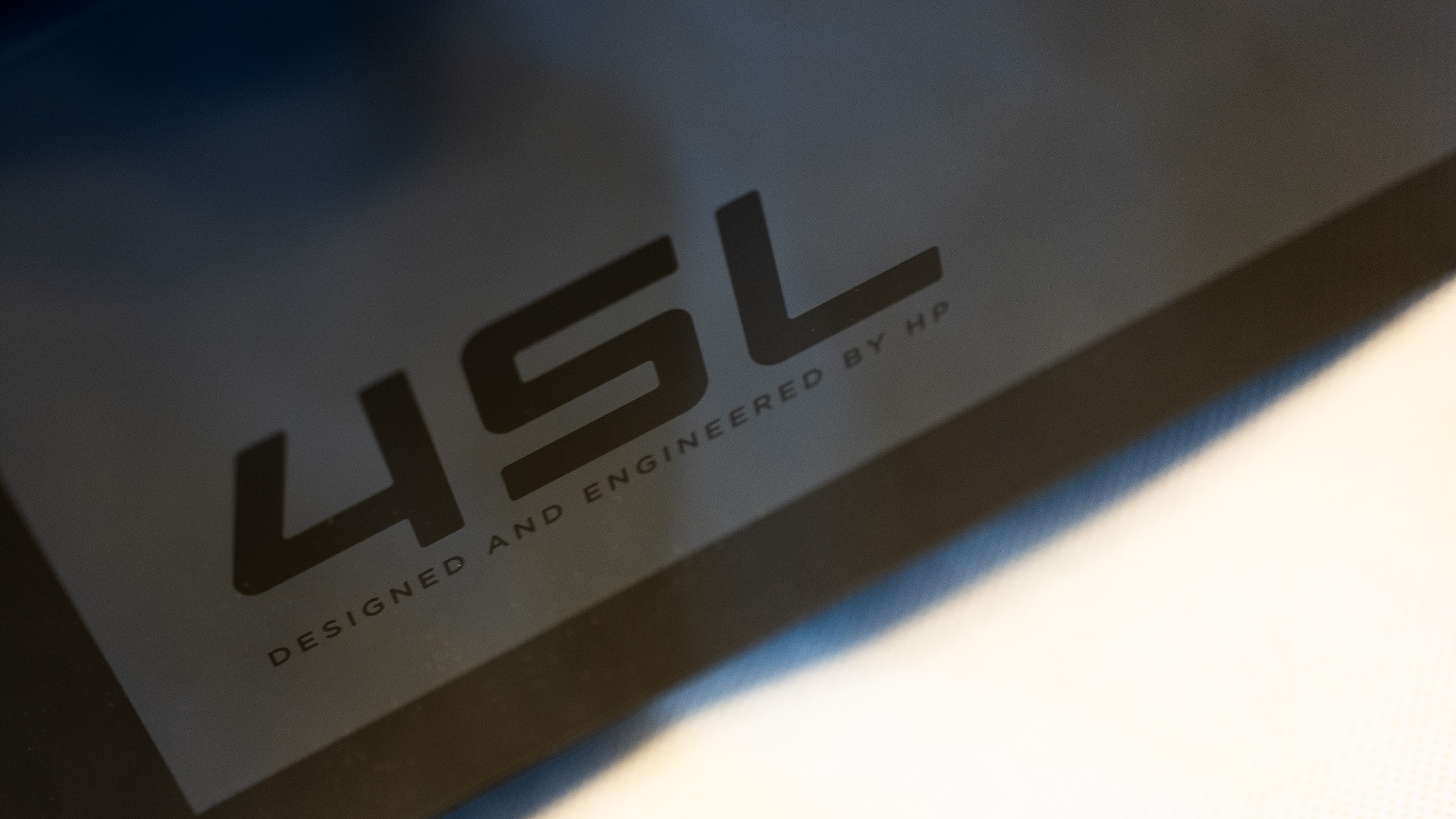

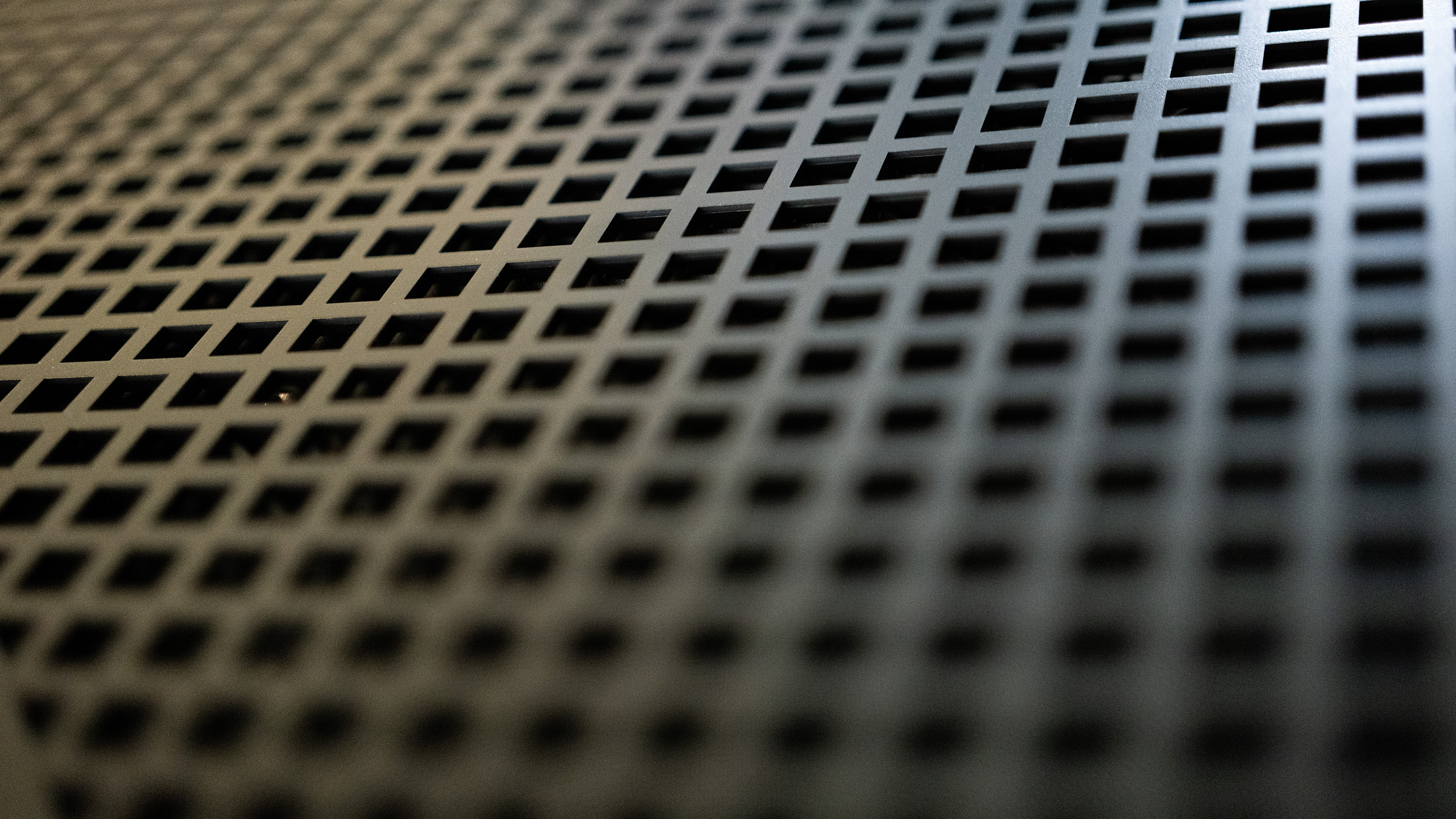
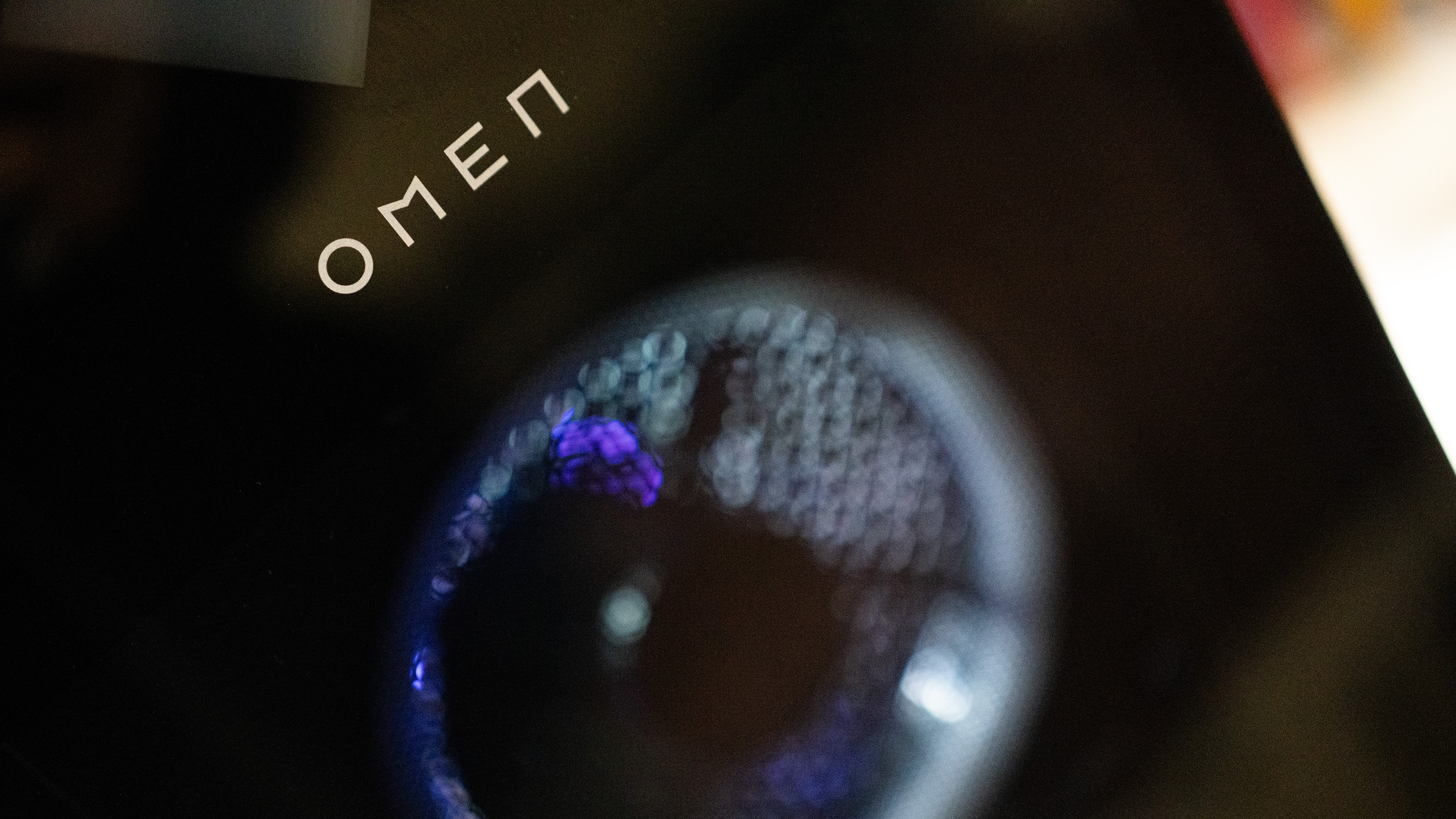
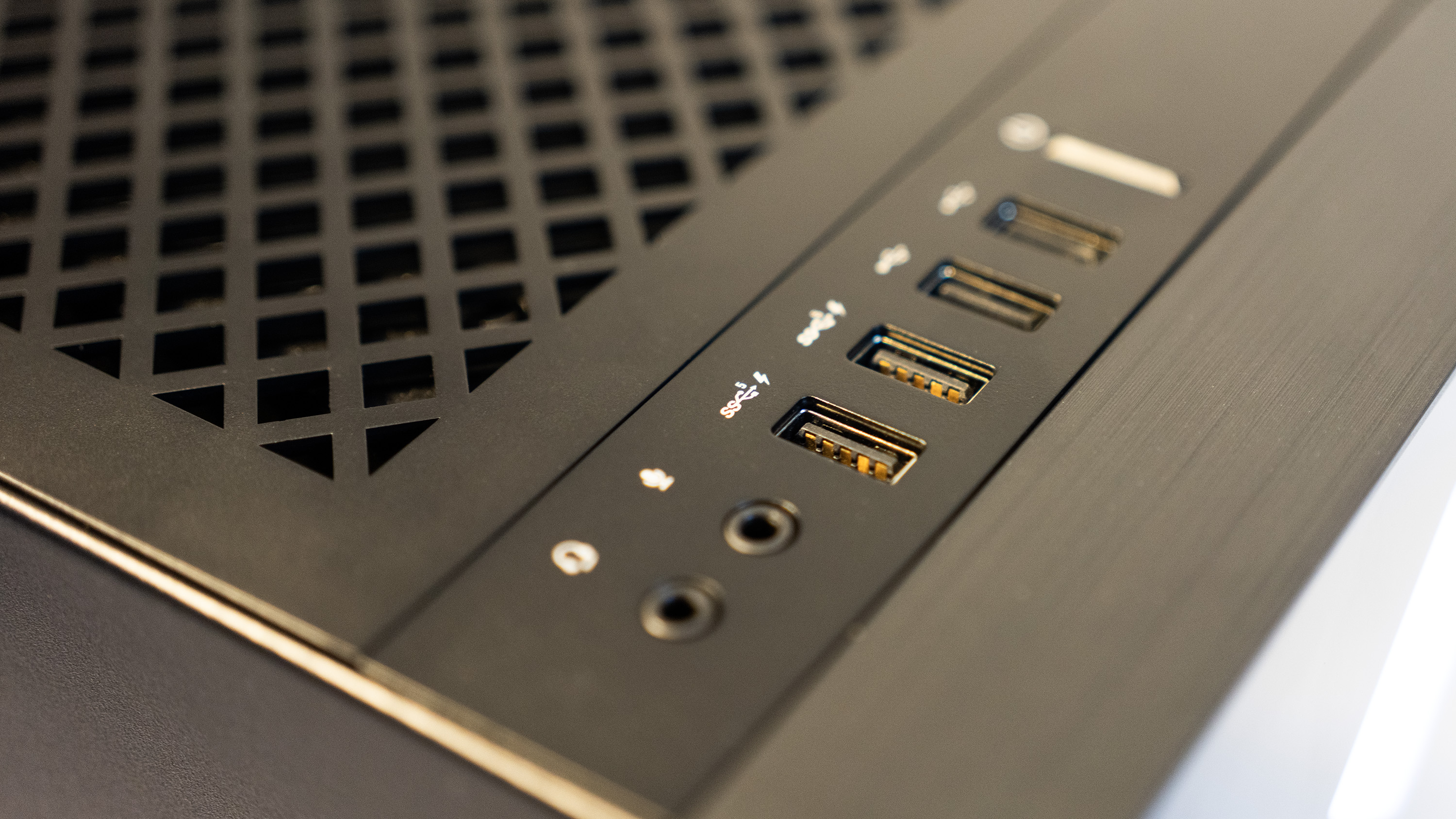
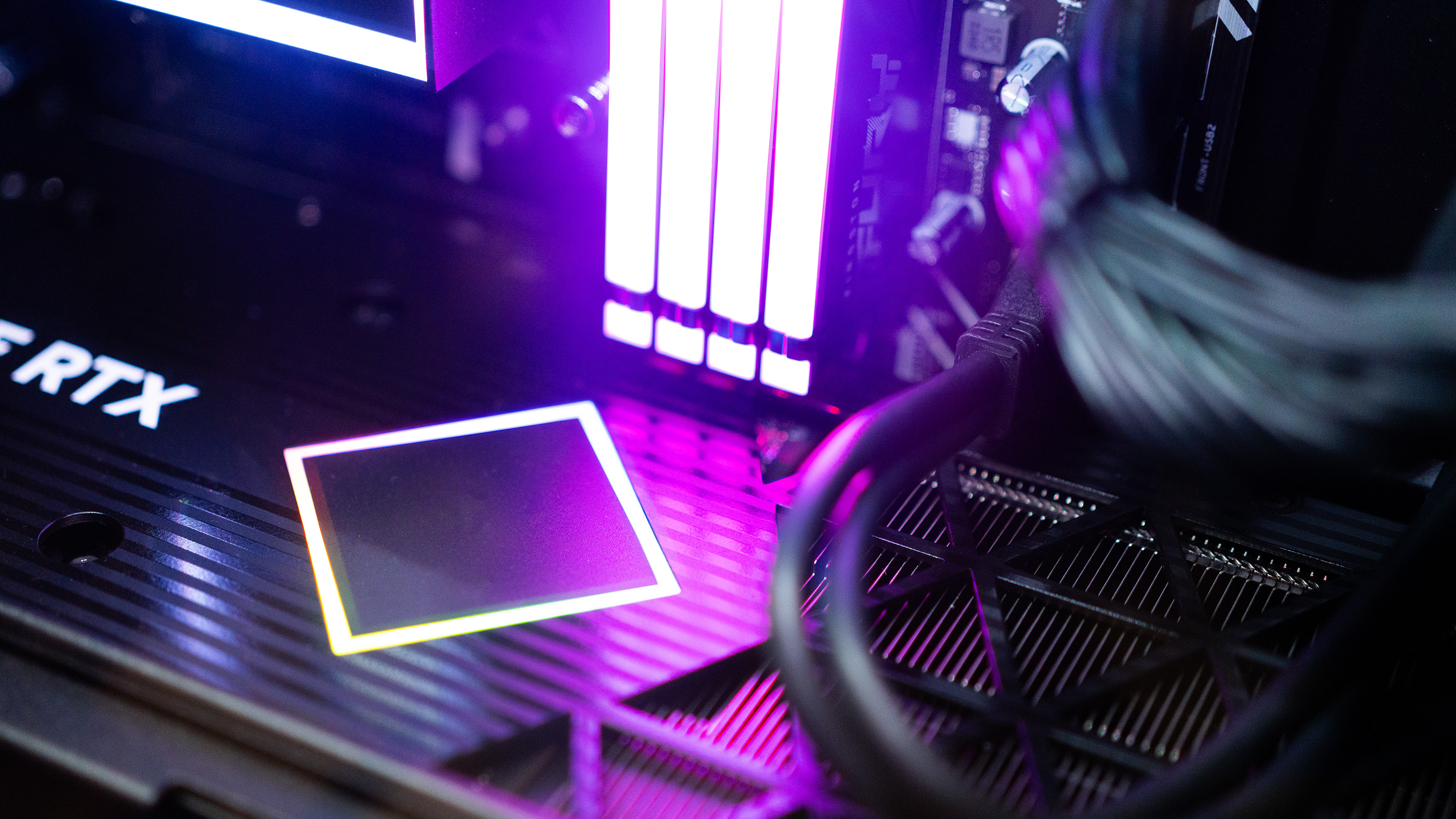
Specifications
Reasons to buy
Reasons to avoid
✅ You need unparalleled power for graphic design and more: The Omen 45L handles the most demanding creative workflows effortlessly.
✅ You want a multi-functional powerhouse: It's perfect for rendering, video editing, 3D modelling, and gaming.
❌ You need portability: Weighing 22.6kg and with large dimensions (20.4 x 47 x 55.5cm), this is a stationary solution.
❌ You're on a budget: Starting at nearly £4,000, the Omen 45L is best suited for those who needs its extreme specs.
🔎 HP Omen 45L is a beast of a machine that blurs the line between gaming and professional-grade workstations. While it’s expensive and energy-intensive, it delivers unparalleled performance. ★★★★
What you need to know: Gaming computers are far more abundant than family desktop towers these days, but because of the powerful components they pack, they also tend to be excellent graphic design computers. And here's a great example. The HP Omen 45L is a high-end gaming PC that doubles as a powerful workstation, making it ideal for both gamers and creatives.
Design: The machine's design is equally impressive, featuring a black monolithic case with customizable RGB lighting. A standout feature is the 'cryo-chamber' cooling system, which keeps the CPU running efficiently, even under heavy workloads. However, its large size (weighing 22.6kg) and significant power consumption do make it less portable and energy-efficient than your average computer. Connectivity options include a wide range of USB ports but lack USB 4 or Thunderbolt support.
Performance: With top-tier specs like an Intel Core i9-13900K processor, NVIDIA GeForce RTX 4090 GPU, 64GB of DDR5 RAM, and 3TB of storage (1TB SSD + 2TB HDD), this PC excels in demanding tasks like video editing, 3D rendering, and gaming at 4K resolution. Our reviewer found the system performed exceptionally well in benchmarks, outpacing many competitors, including the Mac Studio in multi-core processing. Cooling was impressively quiet, even under heavy loads, and the system remainsedstable during demanding operations.
Pricing: Starting at around £2,000, with prices rising with configurations, the HP Omen 45L is undeniably expensive – though you can definitely pick it up for less than the Mac Studio if desired. However, for professionals requiring extreme performance, it represents a worthwhile investment. Its ability to double as a gaming PC adds versatility, though the inclusion of a 2TB HDD alongside its SSD may feel out of place in such a high-end build.
Attributes | Notes | Rating |
|---|---|---|
Price | Expensive but worth it for the specs | ★★★ |
Design | Striking and functional | ★★★★ |
Performance | Industry leading power | ★★★★★ |
Connectivity | Wide-ranging but no Thunderbolt | ★★★★ |

"The decision when buying a PC like this often comes down to whether you need its brute rendering force. This is only one for designers with intense, high-demand workflows."
Also tested
The above are our top picks for graphic design. However, we're always testing new computers and there are plenty that don't quite make the cut for our buying guides, but still represent worthy alternatives. Below you'll find some other computers we've tested that are also well-suited for graphic design, which may be better suited to your particular needs and budget.
ABS Cyclone Aqua
While it's predominantly a machine designed for gamers, the ABS Cyclone Aqua also has its place as an option for graphic designers. We were impressed by the performance of its GPU, and the large case ensures excellent cooling performance – great for those marathon sessions.
Read our 3.5-star ABS Cyclone Aqua review
Velocity Micro Vector Z35
While the mesh-case design of this computer looks stylish, it also serves the practical purpose of allowing 360-degree cooling. Our reviewer was impressed by the performance of this computer – though be aware that if you want to use it for intensive graphic design, you'll need a discrete GPU.
Read our 4-star Velocity Micro Vector Z35 review.
How to choose a computer for graphic design
When it comes to choosing which computer is best for graphic design, there are several key things you'll want to look for, and these are the pillars that also inform which devices we have included in the list above.
For starters, you'll need enough power to run the best graphic design software without stuttering. Ideally, you'll want a CPU with four, six or more cores to run creative software as well as 16GB memory if not more. A dedicated graphics card isn't a must-have unless you're also doing more demanding tasks like motion design or 3D rendering. For static design, the GPU sees little use and you can probably get away without a dedicated card. You'll also want enough storage space to be able to cope with your workflow. How much will depend on the type of files you work with and whether you also use external or cloud-based storage.
Finally, you'll need to decide what kind of setup you prefer. Some PCs for graphic design included in our list above are integrated, all-in-one devices that have their own monitor, keyboard and mouse. That can work out cheaper, it makes buying easier and it reduces desk clutter. However, if you want to be able to choose your monitor and peripherals or work across a multiple-monitor setup, you may prefer to buy a computer alone. Budget is obviously another concern, and we have aimed to include options at different price points.
How we test computers for graphic design
Creative Bloq's team of hardware experts bring with them many years of experience using, testing and benchmarking computers with a focus on running creative applications. All the computers in this guide have been tested either by using graphic design software or benchmarked to ensure the CPU and GPU is capable of the most intensive graphic design tasks. We run different benchmark tests on each device depending on its intended use by its maker, but the benchmarks we've run all the computers in this guide through include the following:
• Cinebench R23/2024 - this assesses the performance of a computer's CPU and GPU using real-world 3D rendering tasks
• Geekbench 5/6 - this tests the CPU's processing power, both by using a single core for a single task at a time as well as all the CPU's core to see its ability to multitask
• 3DMark - this assesses a computer's ability to run 3D graphic rendering tasks
But perhaps more importantly than benchmarking, we evaluate machines in real-world scenarios, pushing them to the limit with multiple applications running to see how they perform in project-like conditions. Power, speed, flexibility, and what a computer looks and feels like to use are all criteria in our reviewing process. We do much more than simply unpack a test unit, run some benchmarks and then pack it up again; we have lived and worked with all of the above computers, running them in real-life scenarios and completed projects relevant to the subject of this guide, otherwise, we wouldn't recommend these models to you. For more details, see our article on How we test.
FAQs
Should I buy a desktop computer or laptop for graphic design?
Both can work well, but desktop PCs provide designers with more bang for their buck. Desktop PCs can usually be configured according to your needs, and tend to be more affordable than a laptop with comparable specifications. Windows desktop PCs for graphic design also have the advantage of being customisable, so you can replace and upgrade components as needed.
What specs does a desktop computer need to run graphic design software?
Here's a quick rundown:
- A CPU with four, six or more cores to run creative software.
- Plenty of memory or RAM – at least 16GB, though 32GB is better
- A speedy SSD with plenty of storage space.
- Optional: a dedicated graphics card is worth considering if you do motion design or 3D.
Is Mac or PC better for graphic design?
Each has its respective strengths. There are very capable Mac and PC solutions for a range of demanding requirements across the market.
Windows PCs are typically much cheaper than Apple alternatives, and desktop towers are usually easy to upgrade, which can greatly prolong the lifespan of a machine. Apple devices on the other hand, while more expensive in some regions, are known for being high-quality and are well-optimised for creative work – historically, many graphic designers have tended to use iMac and Mac products.

With the new M3 iMac now out, the previous M1 all-in-one is seeing solid discounts, making it excellent value. It still provides enough power for programs like Illustrator and a great webcam.
Read more below
Daily design news, reviews, how-tos and more, as picked by the editors.

Beren has worked on creative titles at Future Publishing for over 13 years. Cutting his teeth as Staff Writer on the digital art magazine ImagineFX, he moved on to edit several creative titles, and is currently the Ecommerce Editor on the most effective creative website in the world. When he's not testing and reviewing the best ergonomic office chairs, phones, laptops, TVs, monitors and various types of storage, he can be found finding and comparing the best deals on the tech that creatives value the most.
- Jon StapleyFreelance writer
